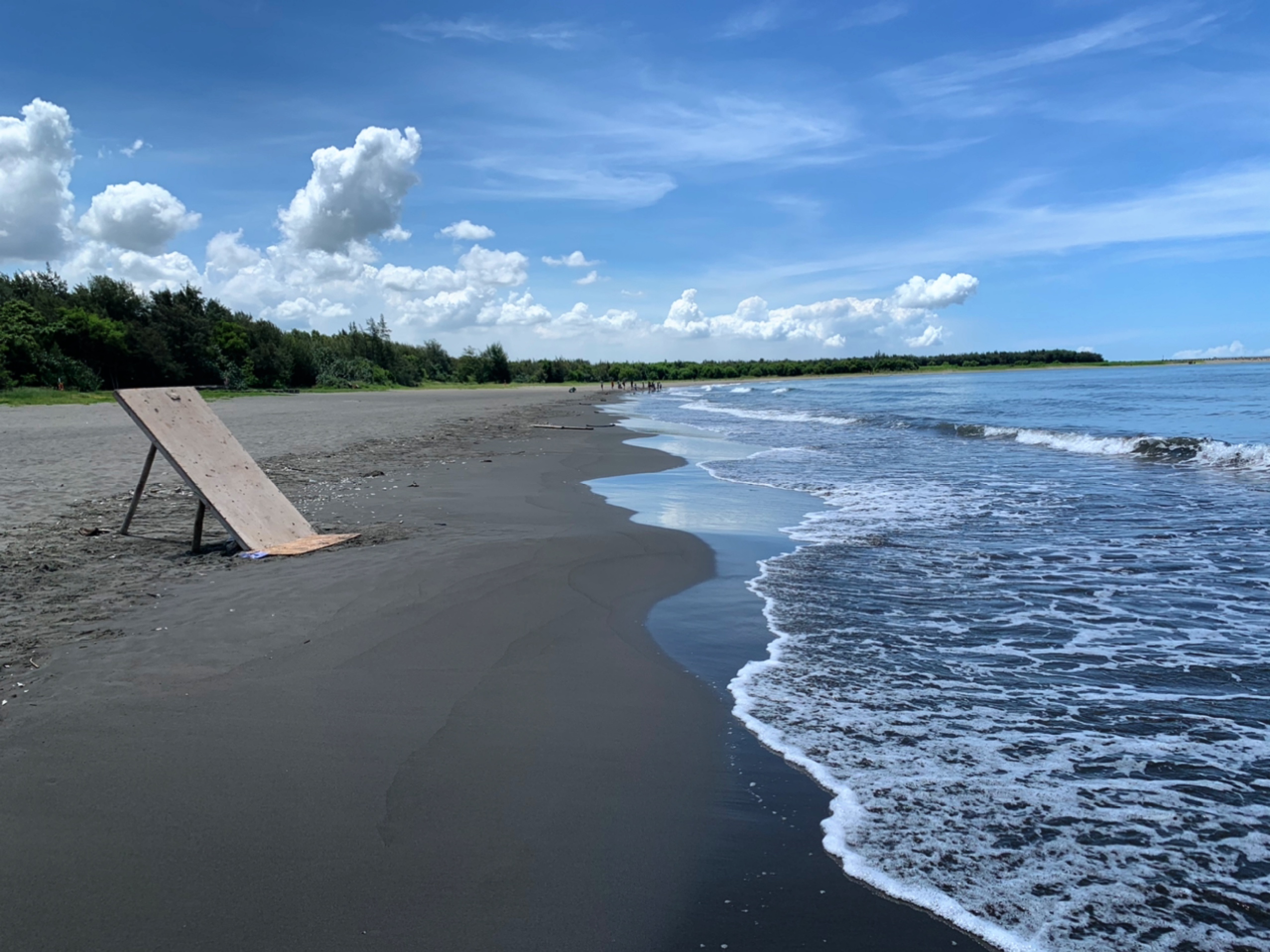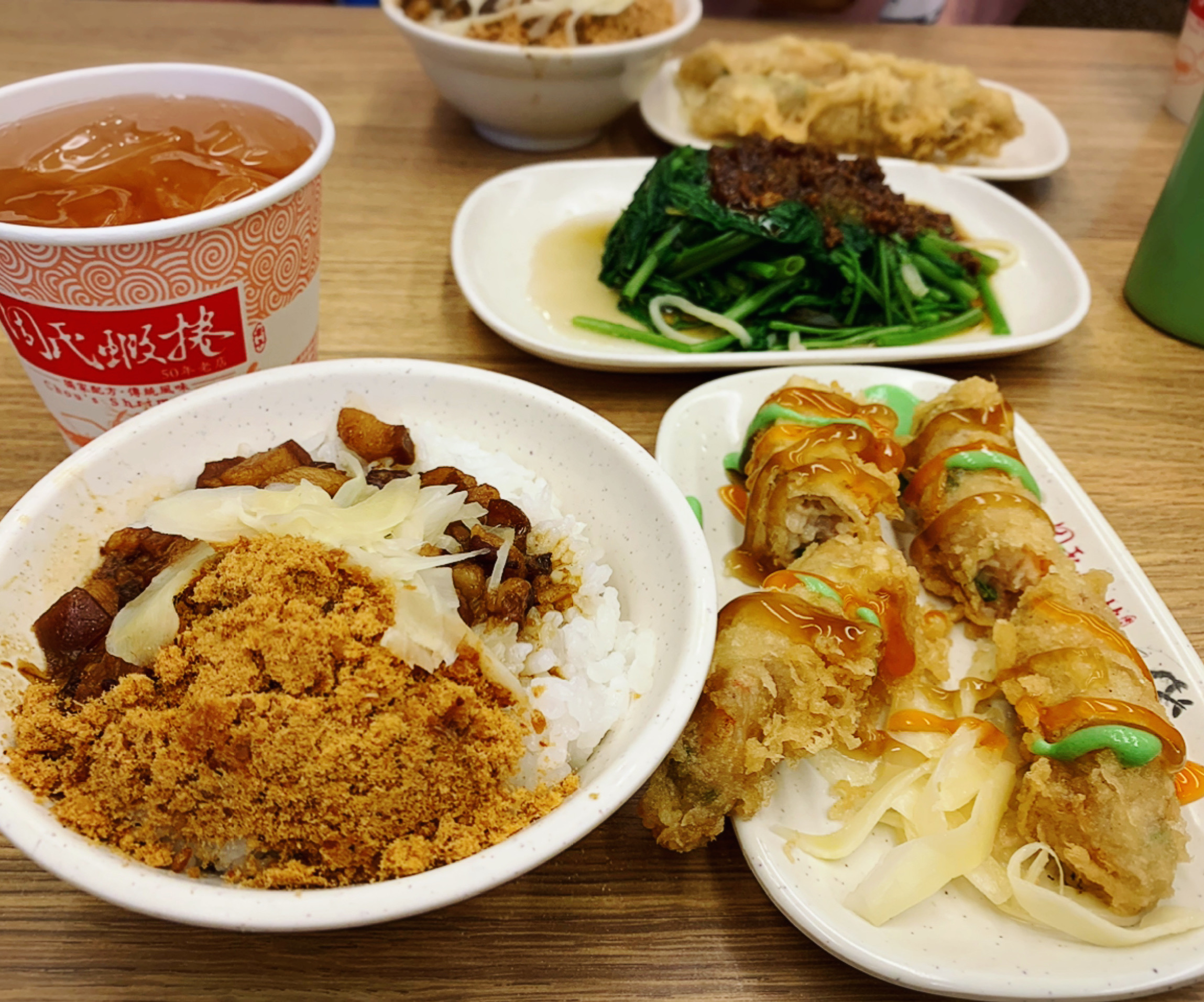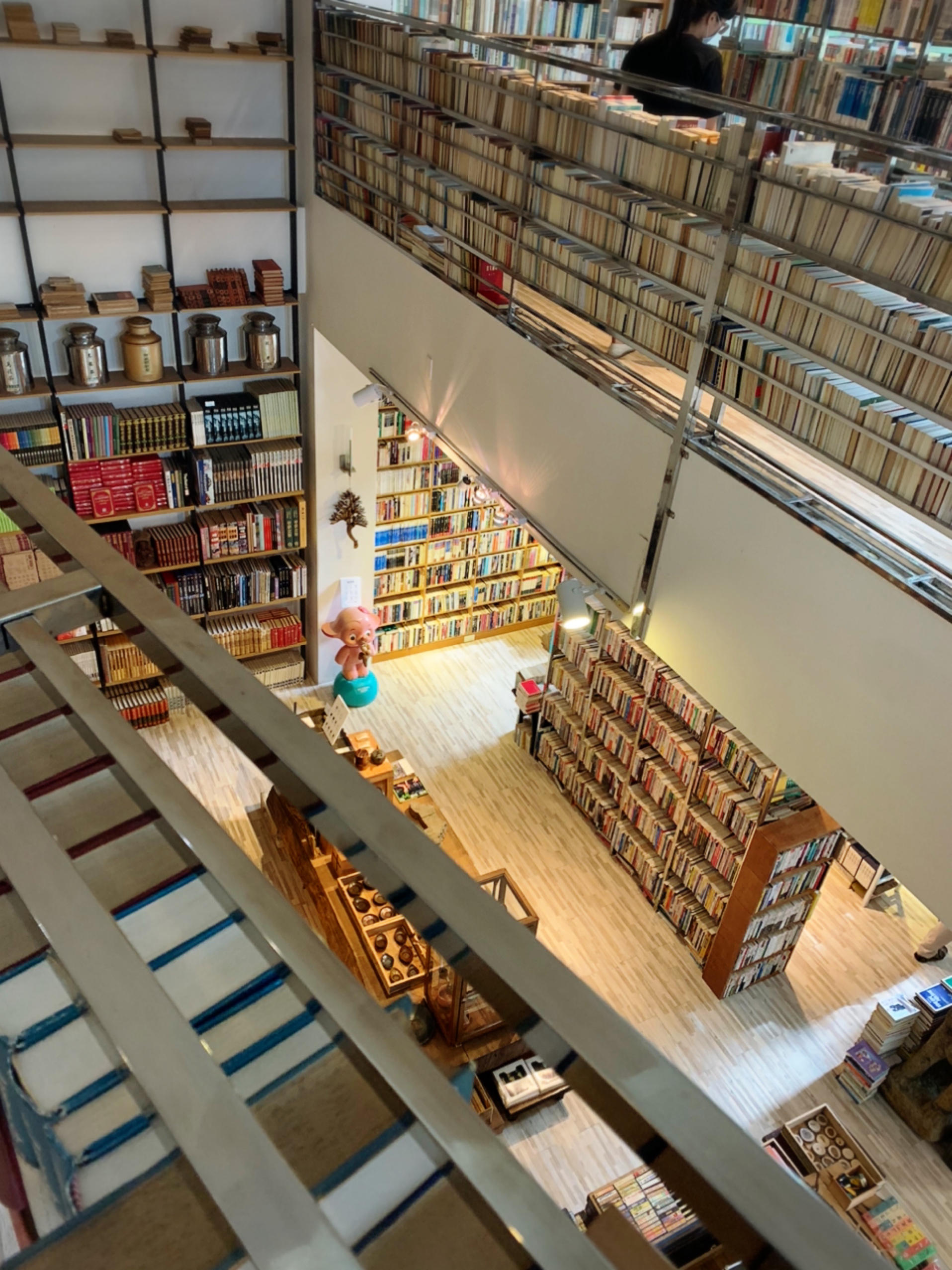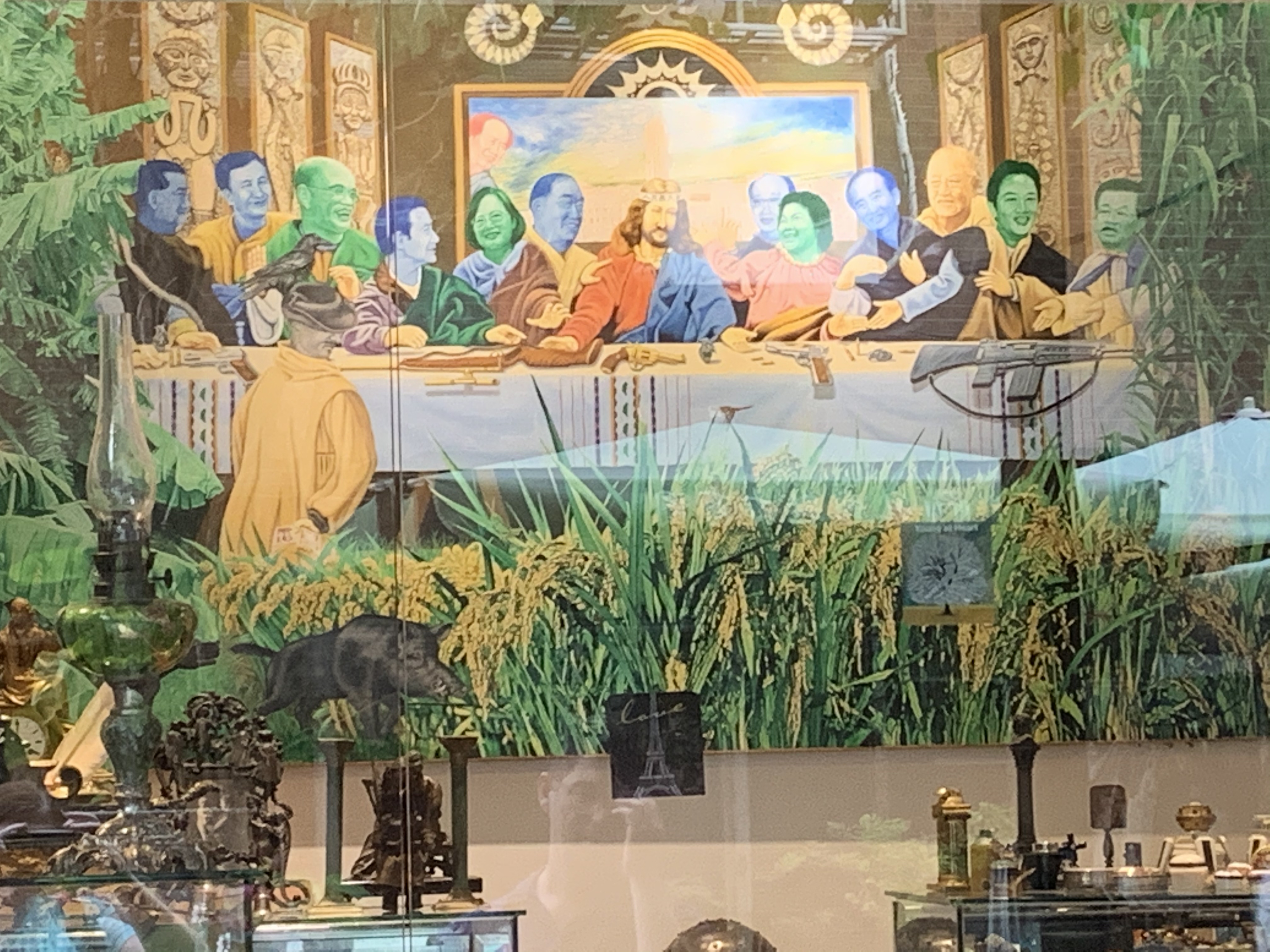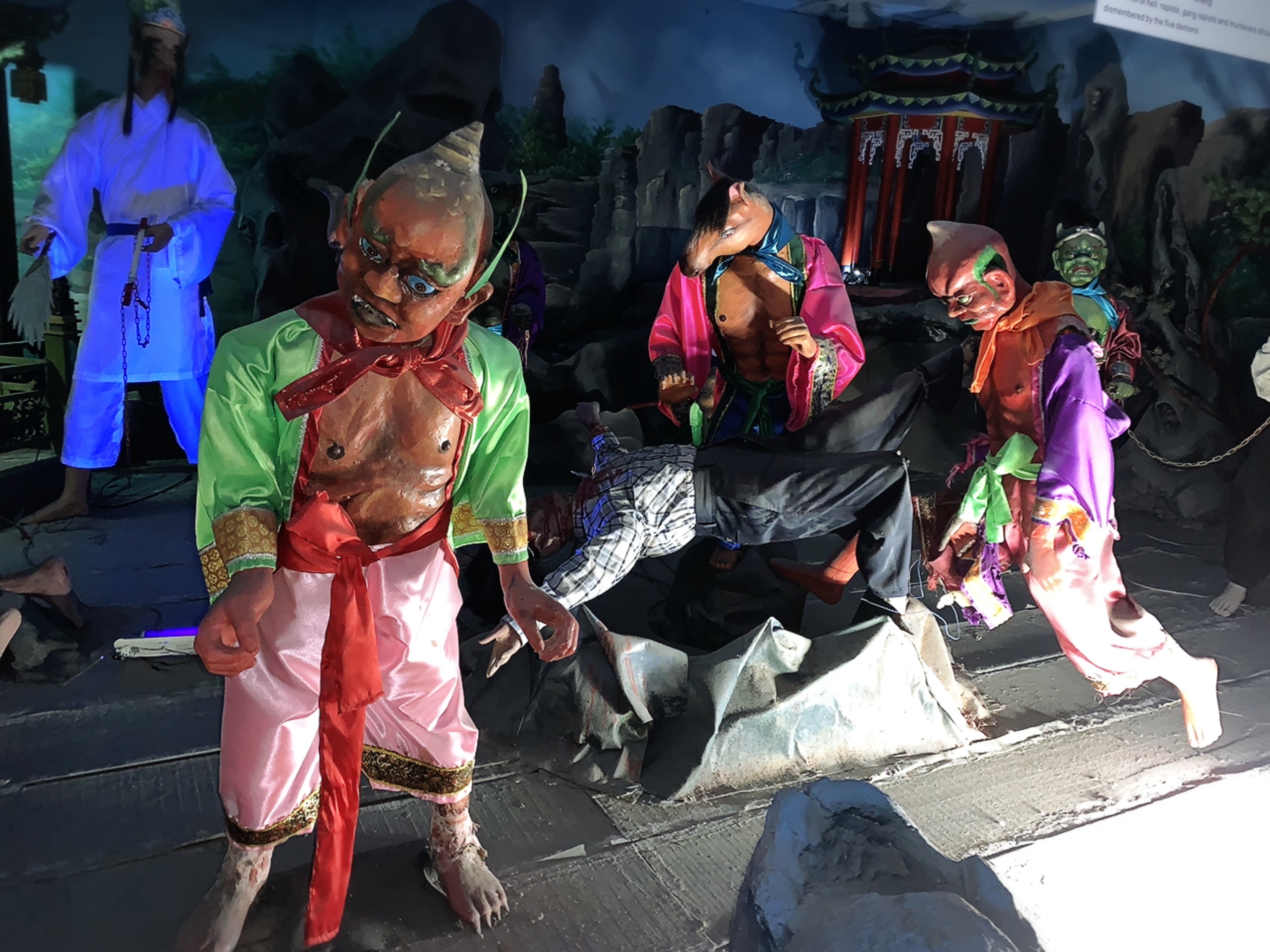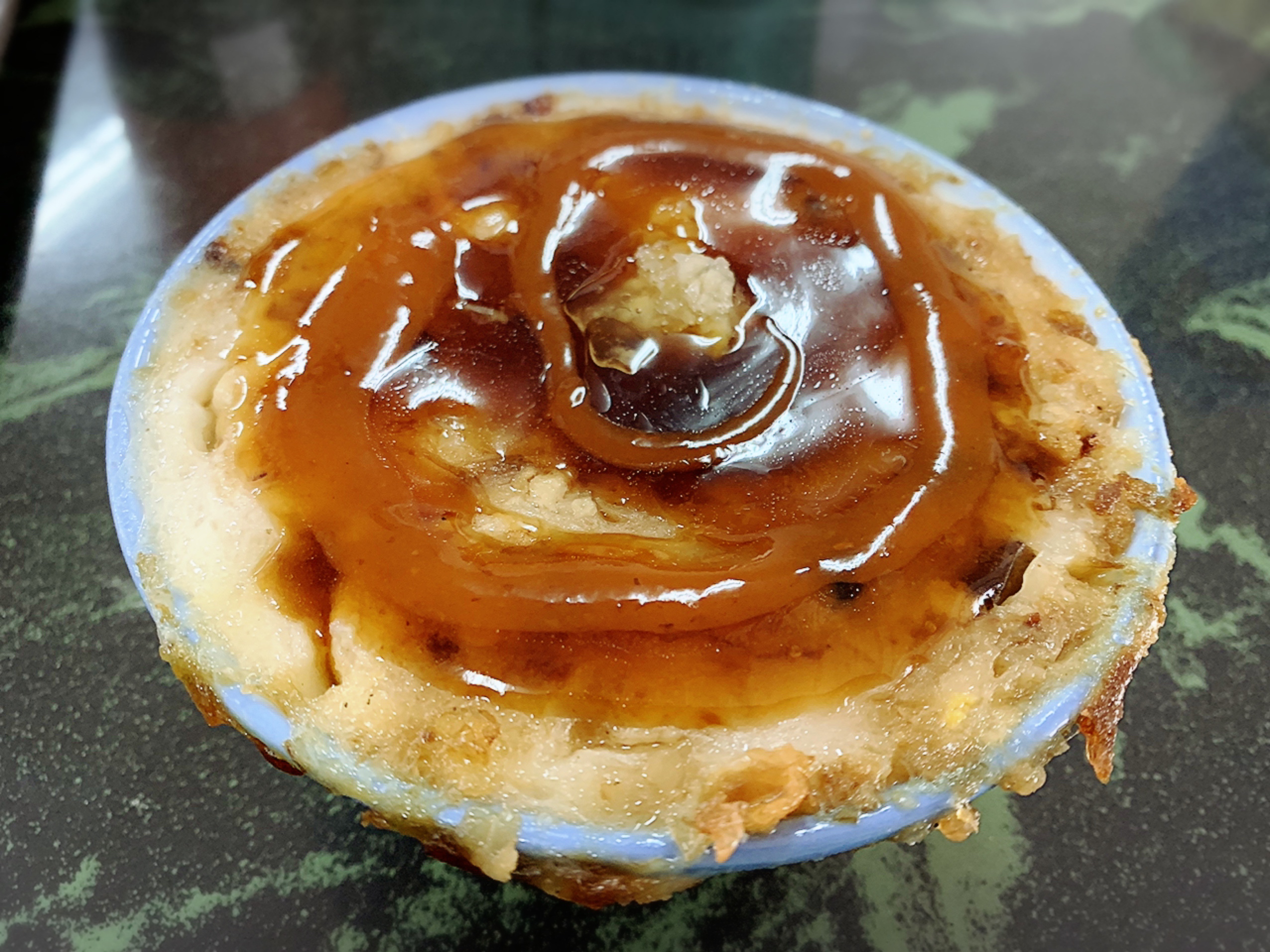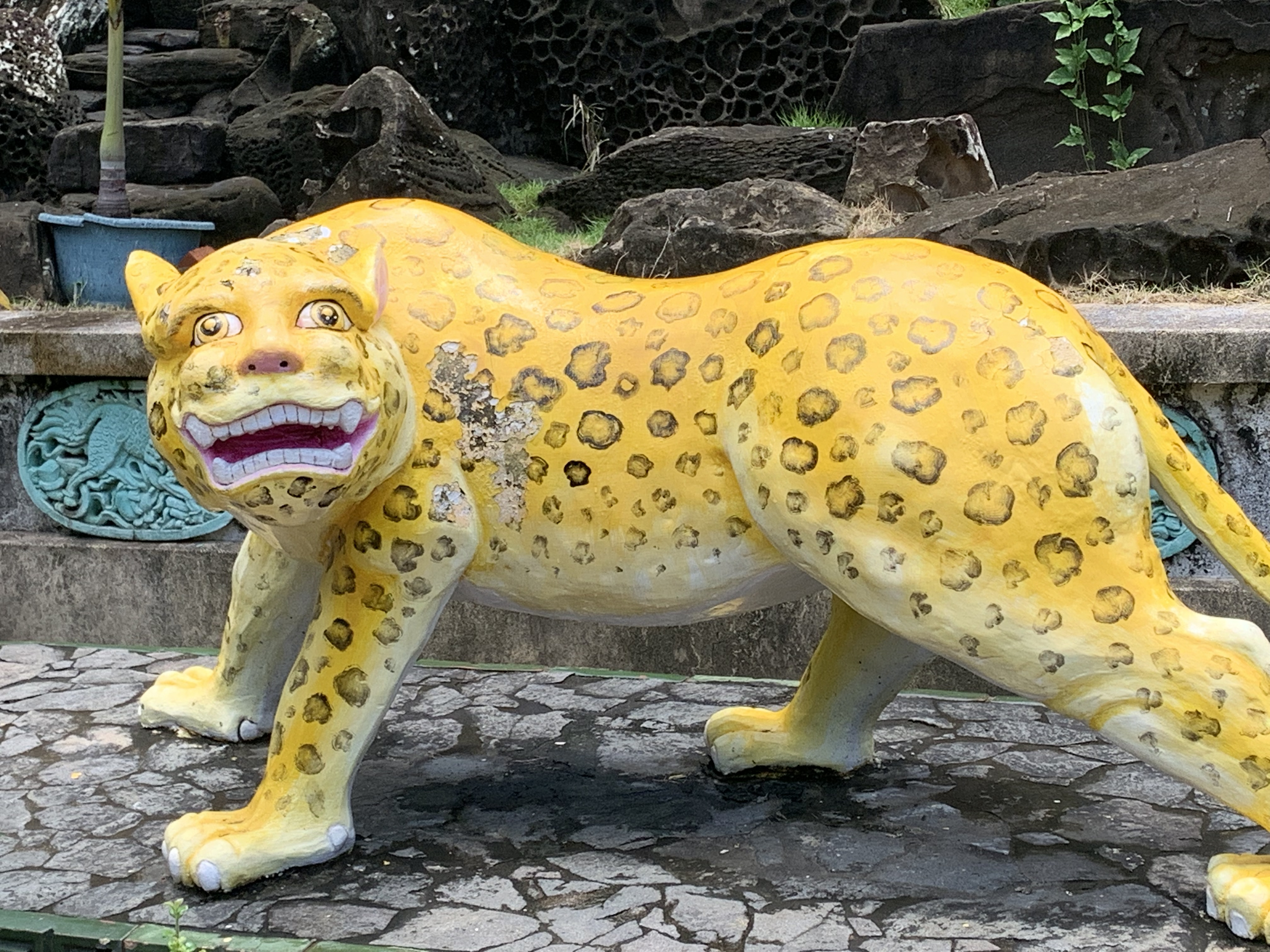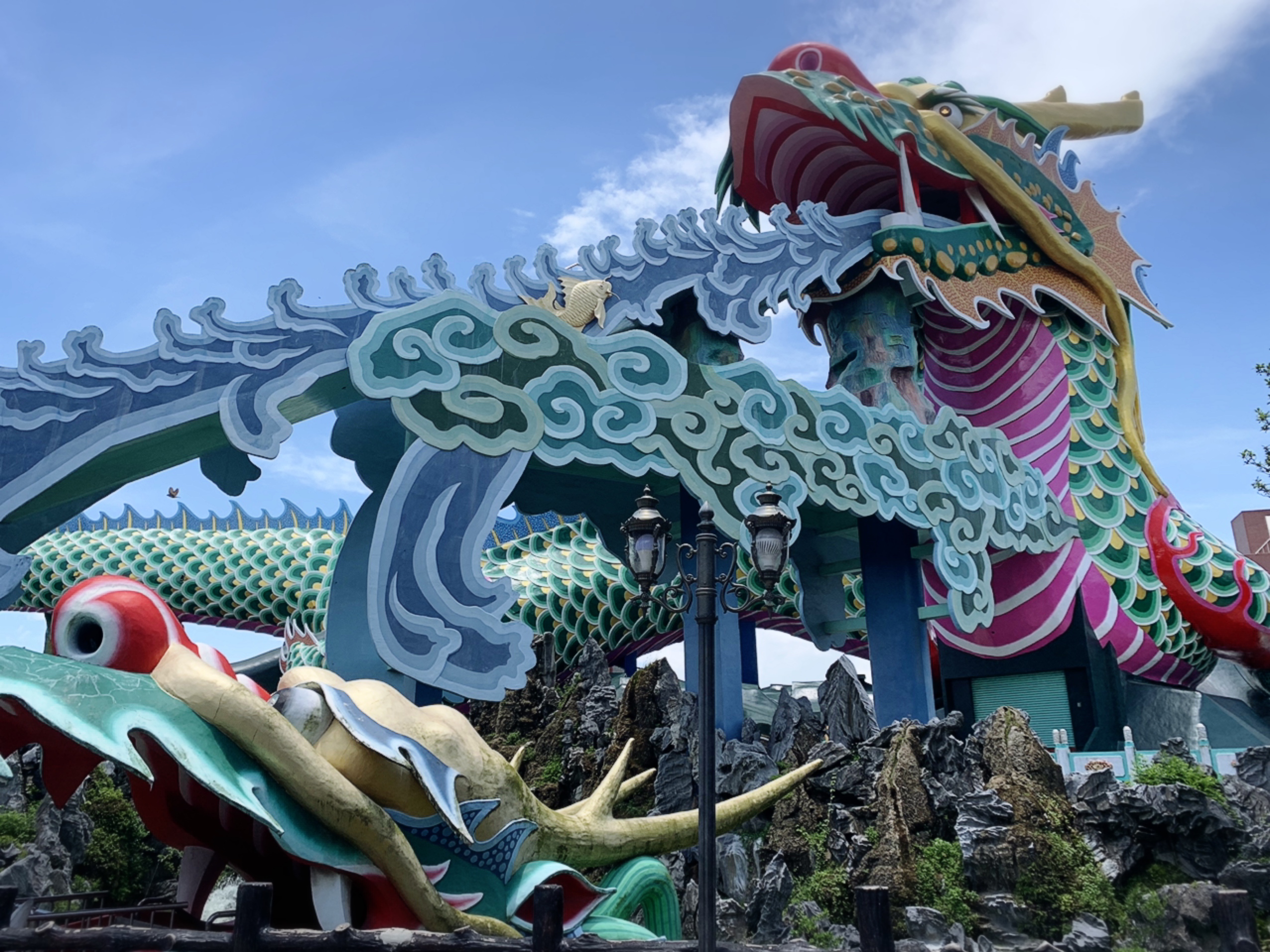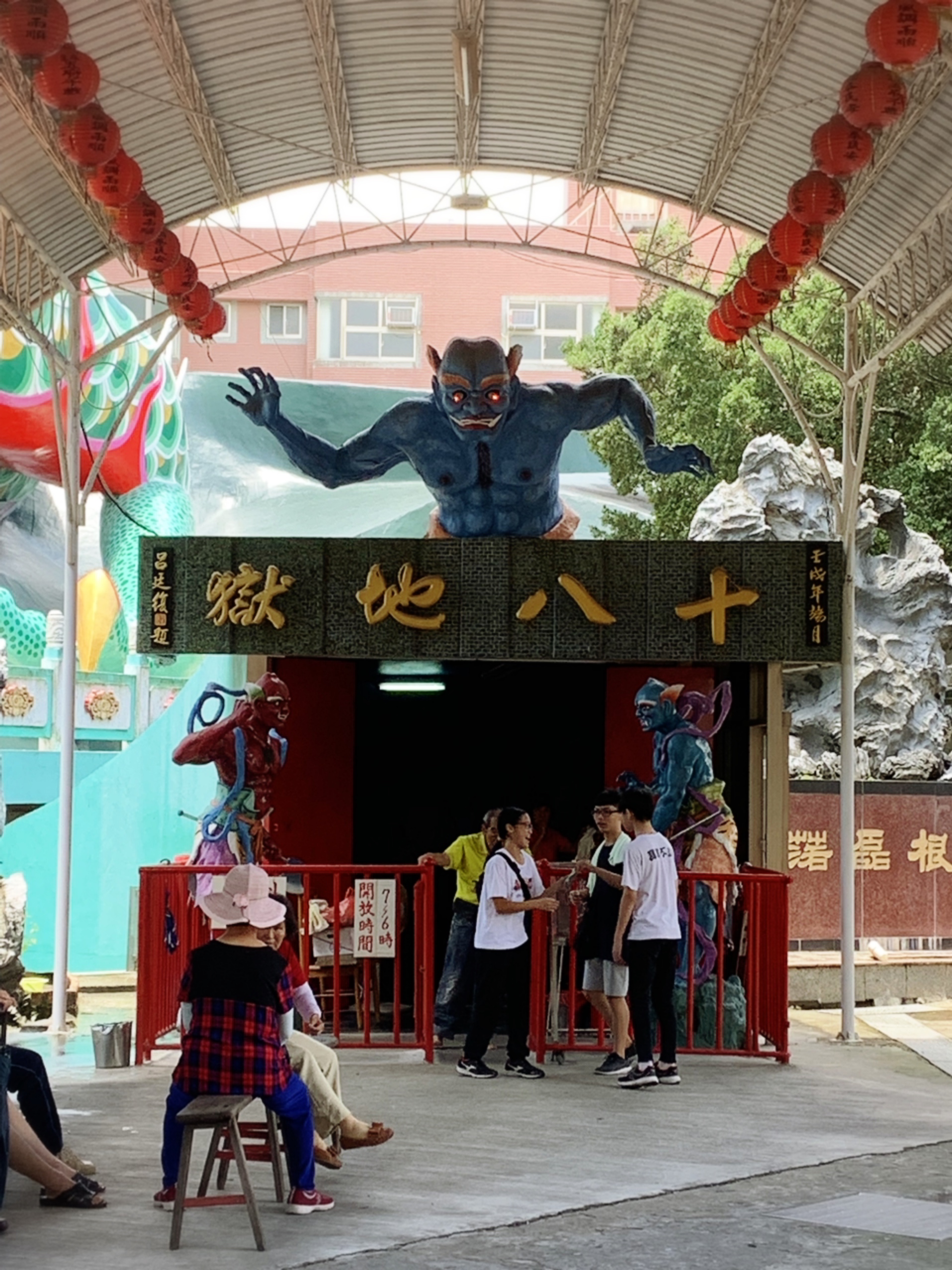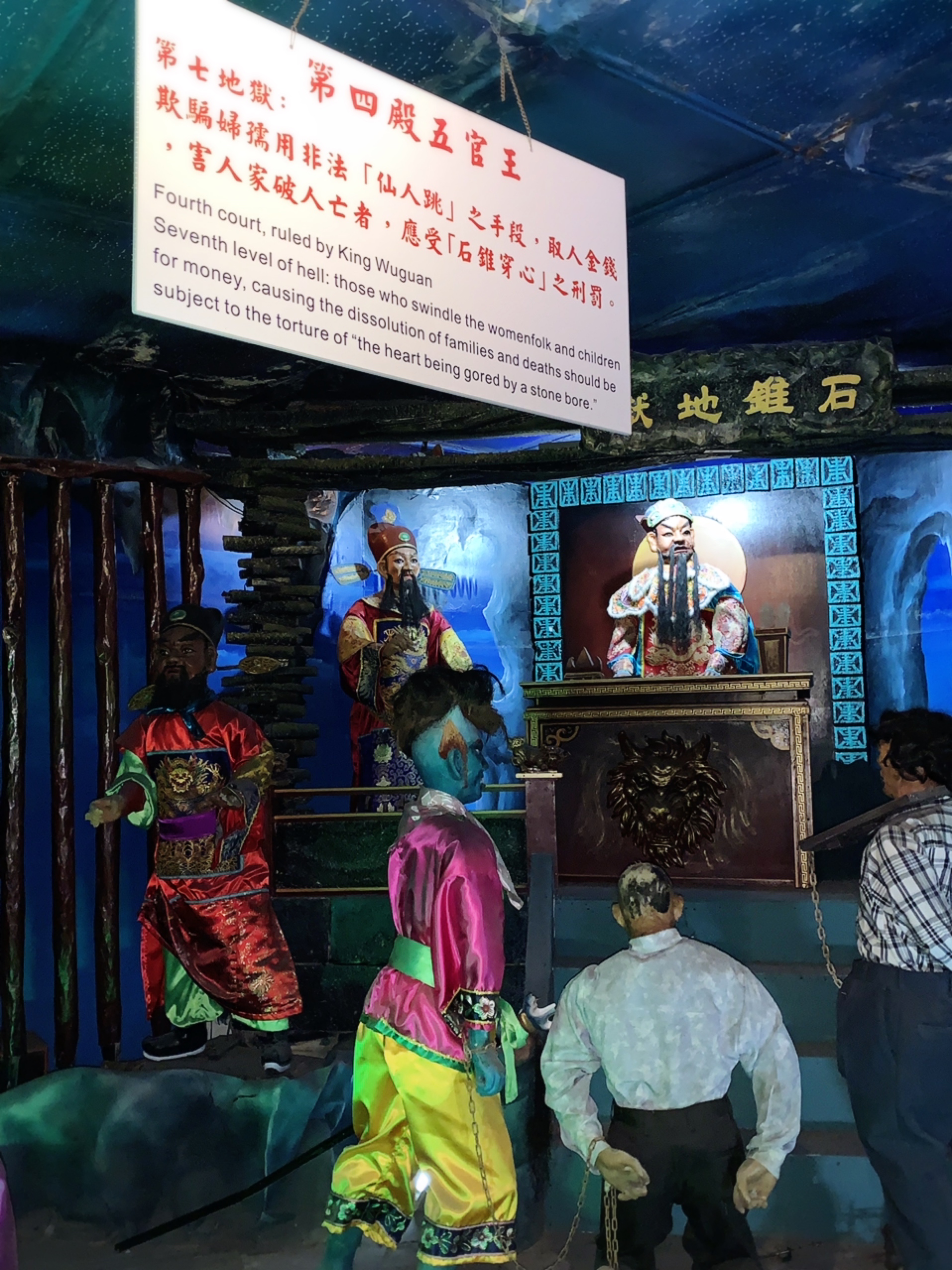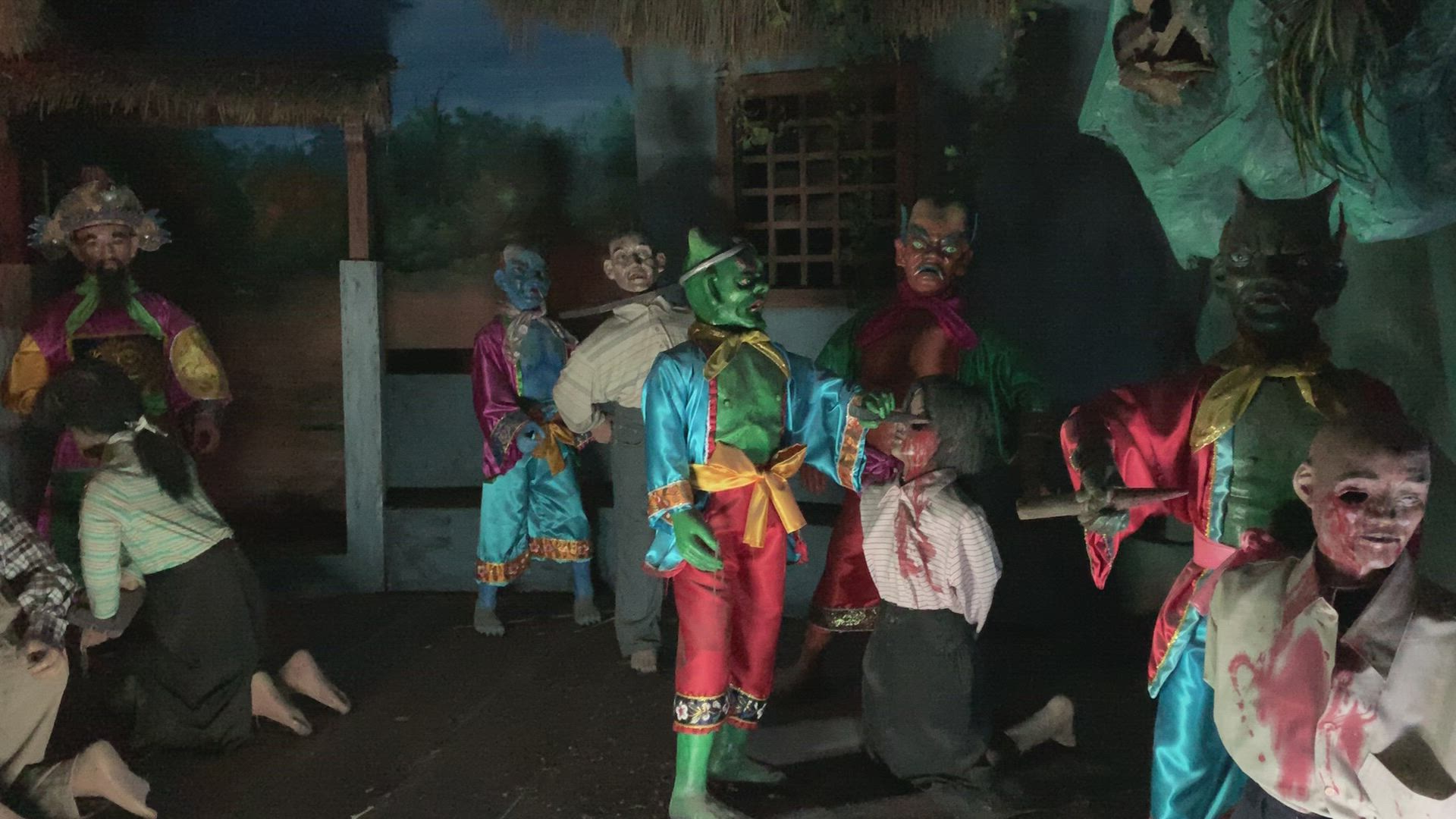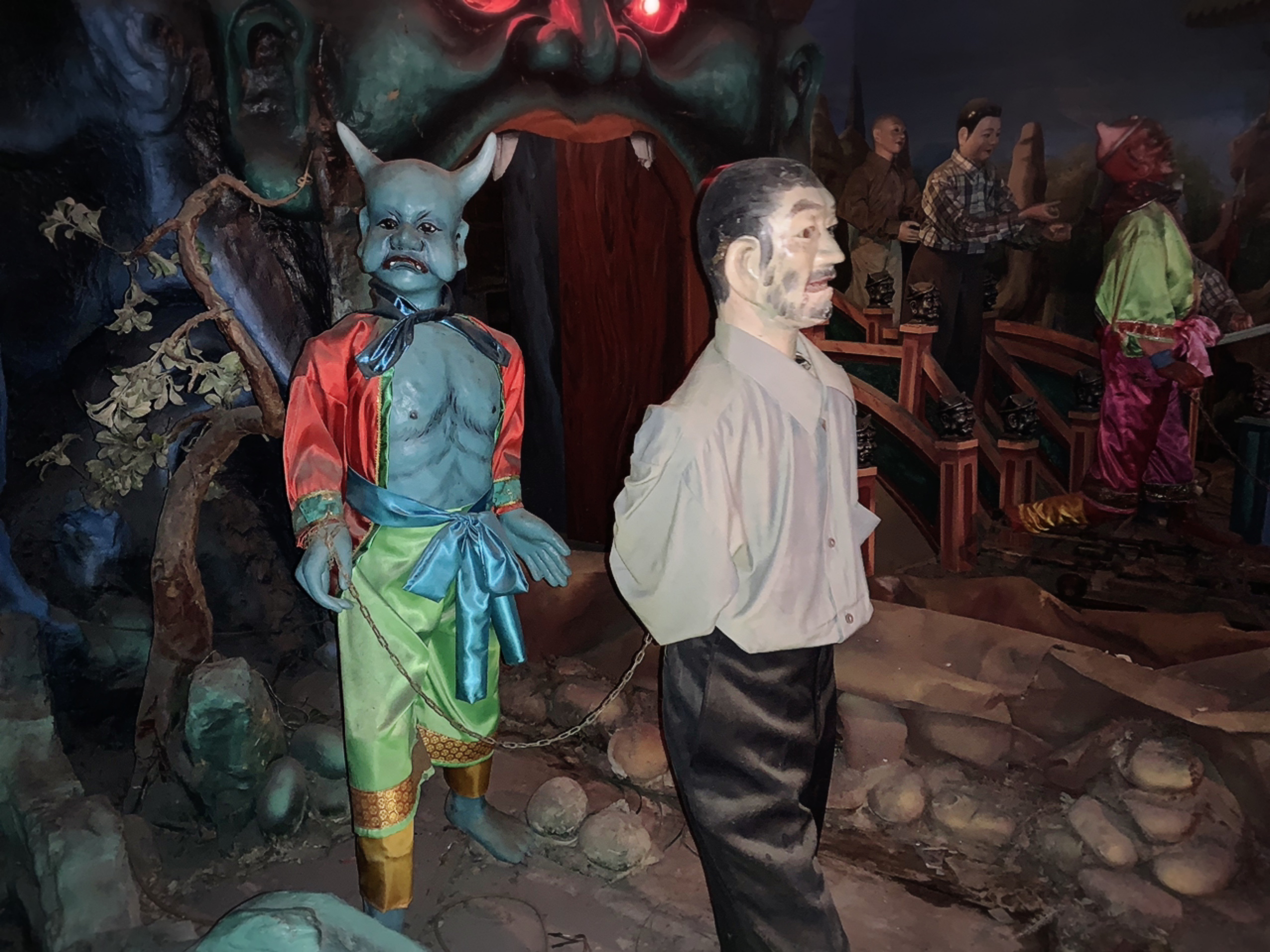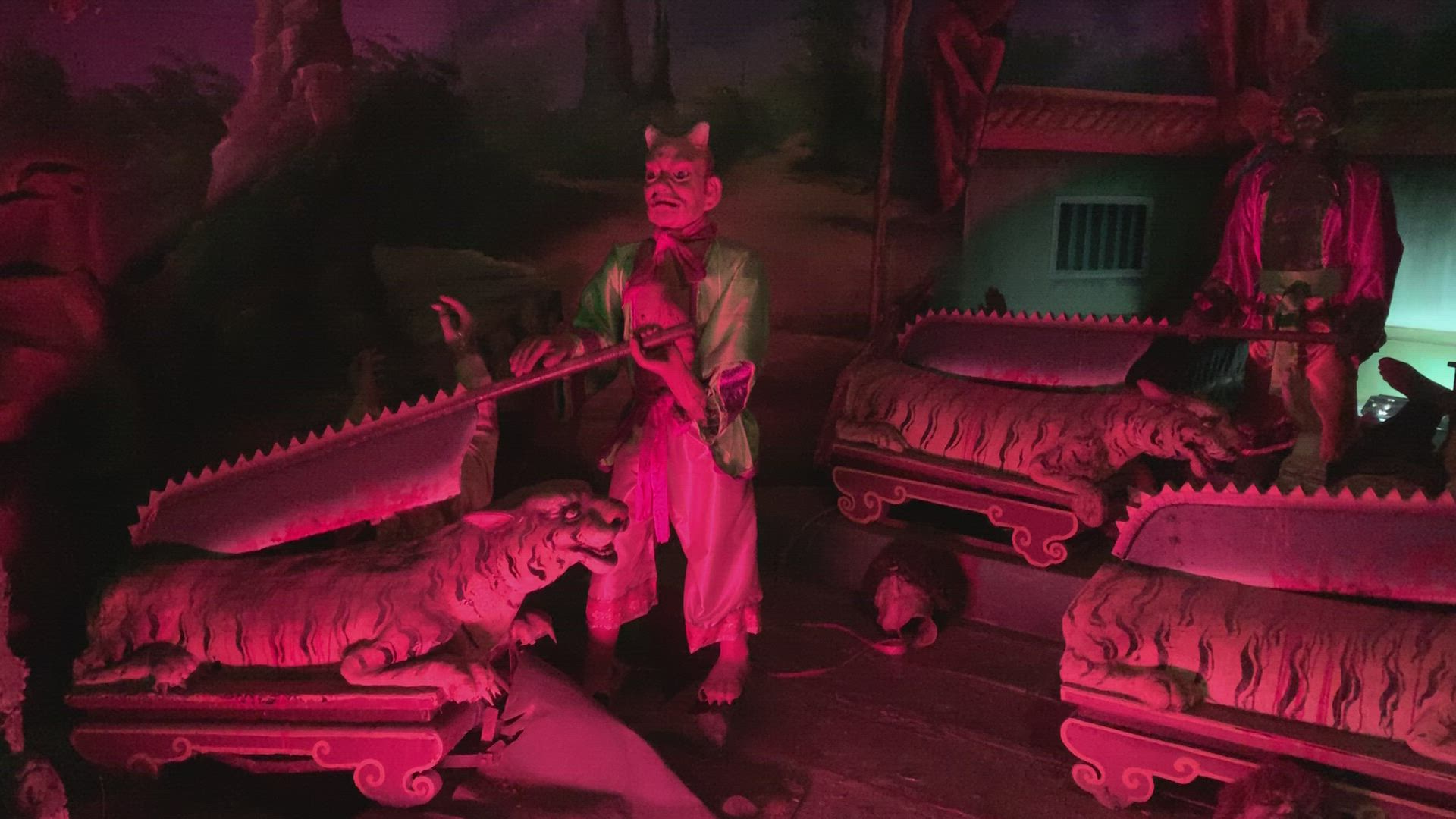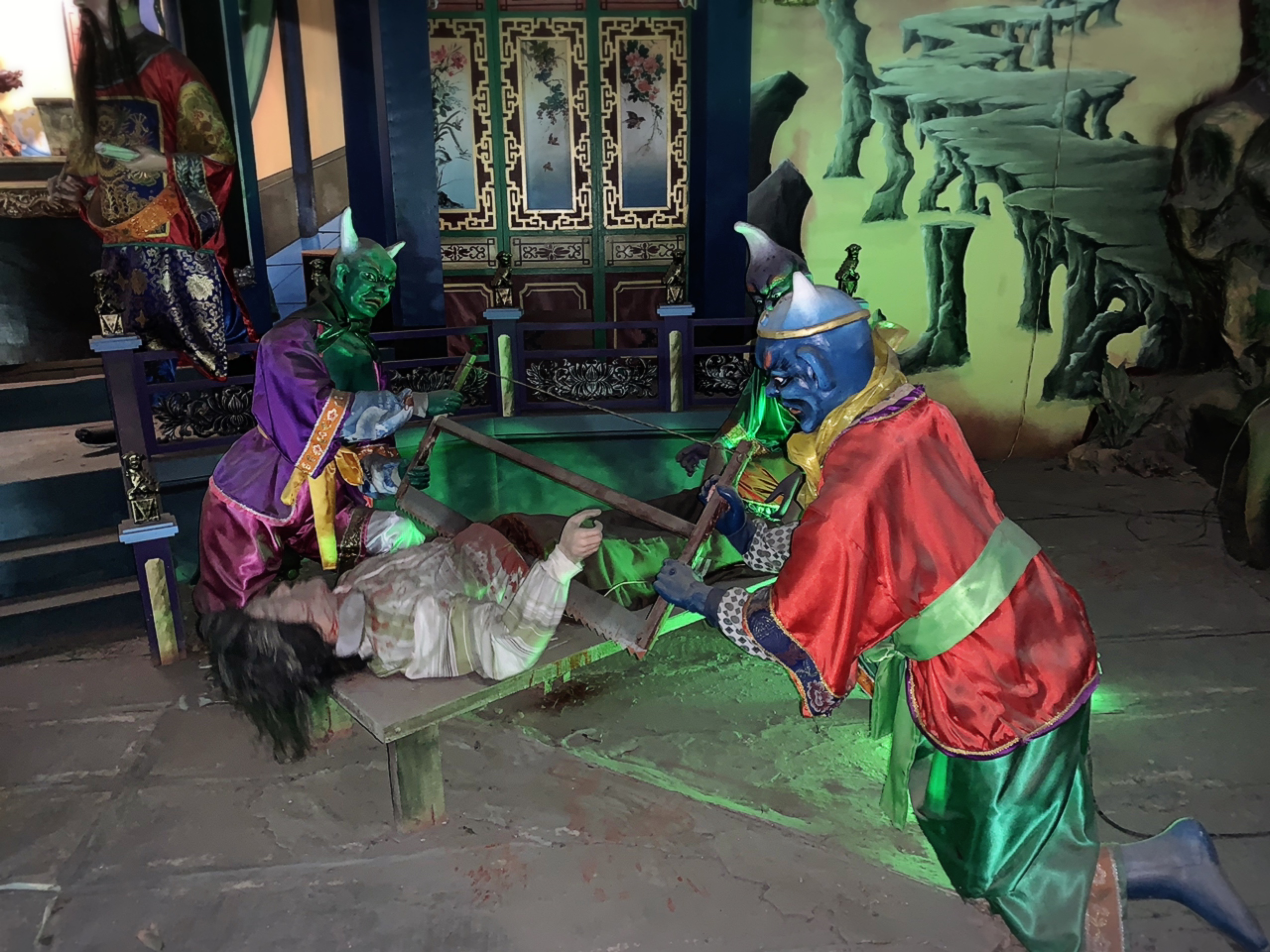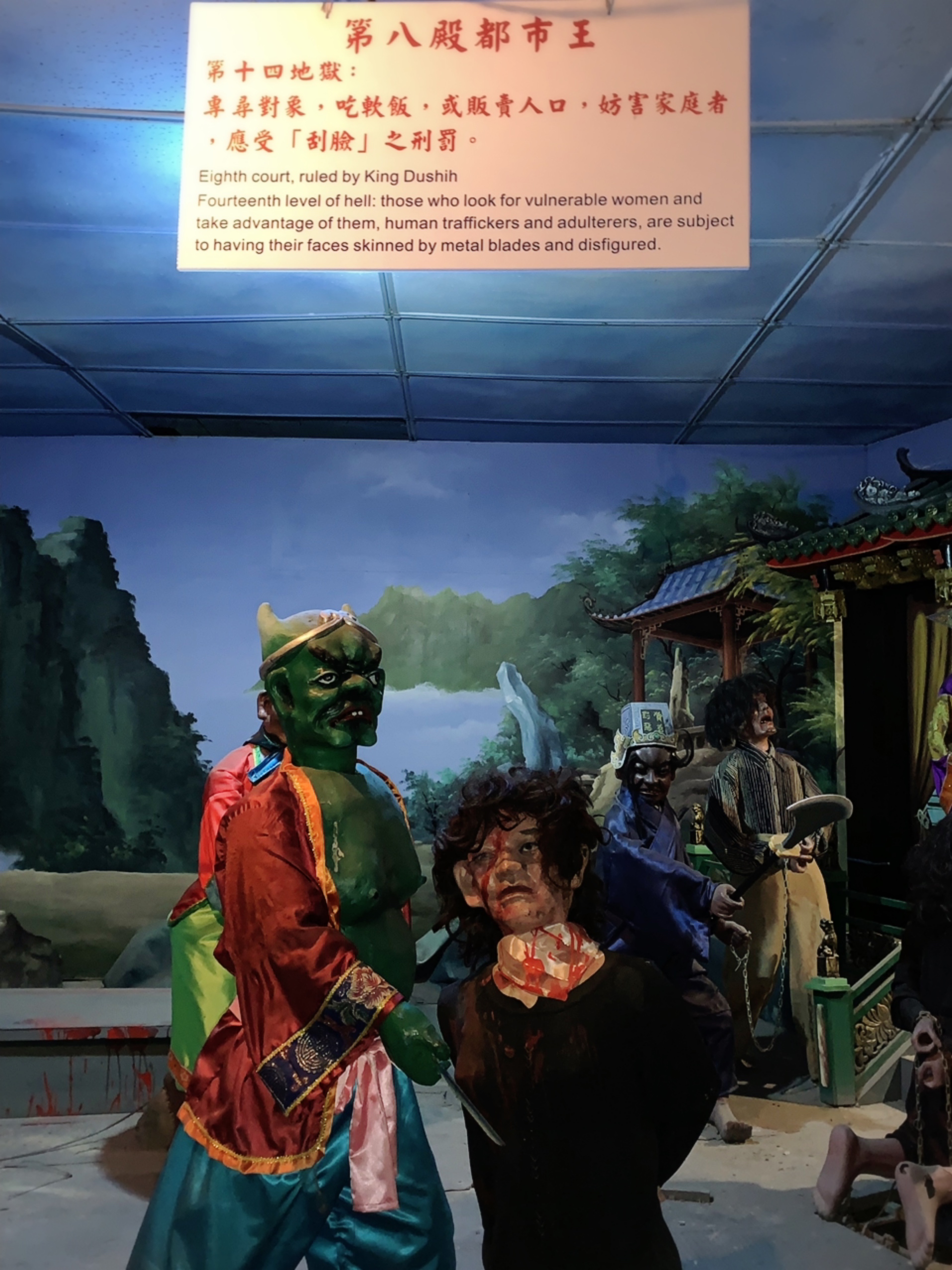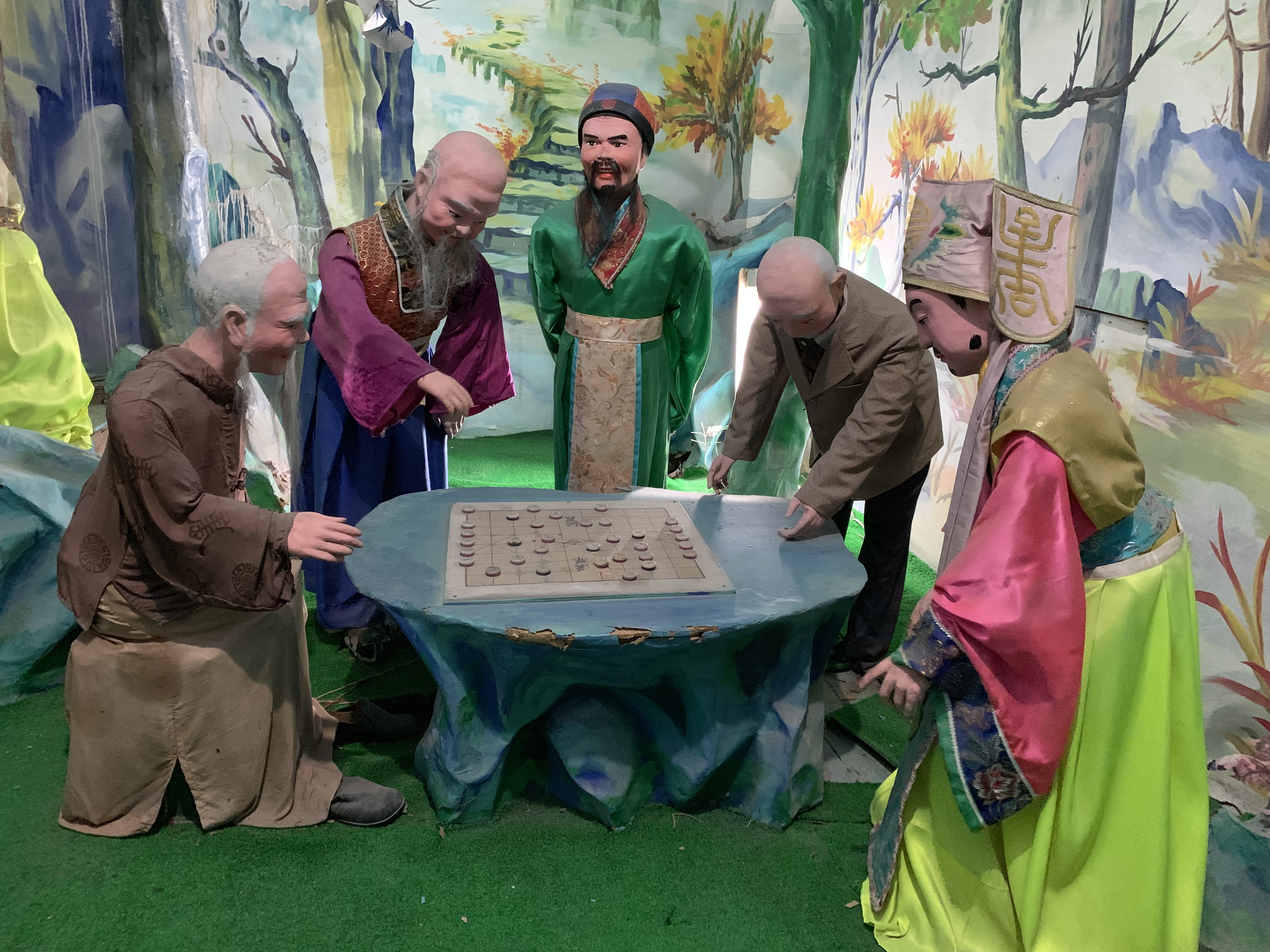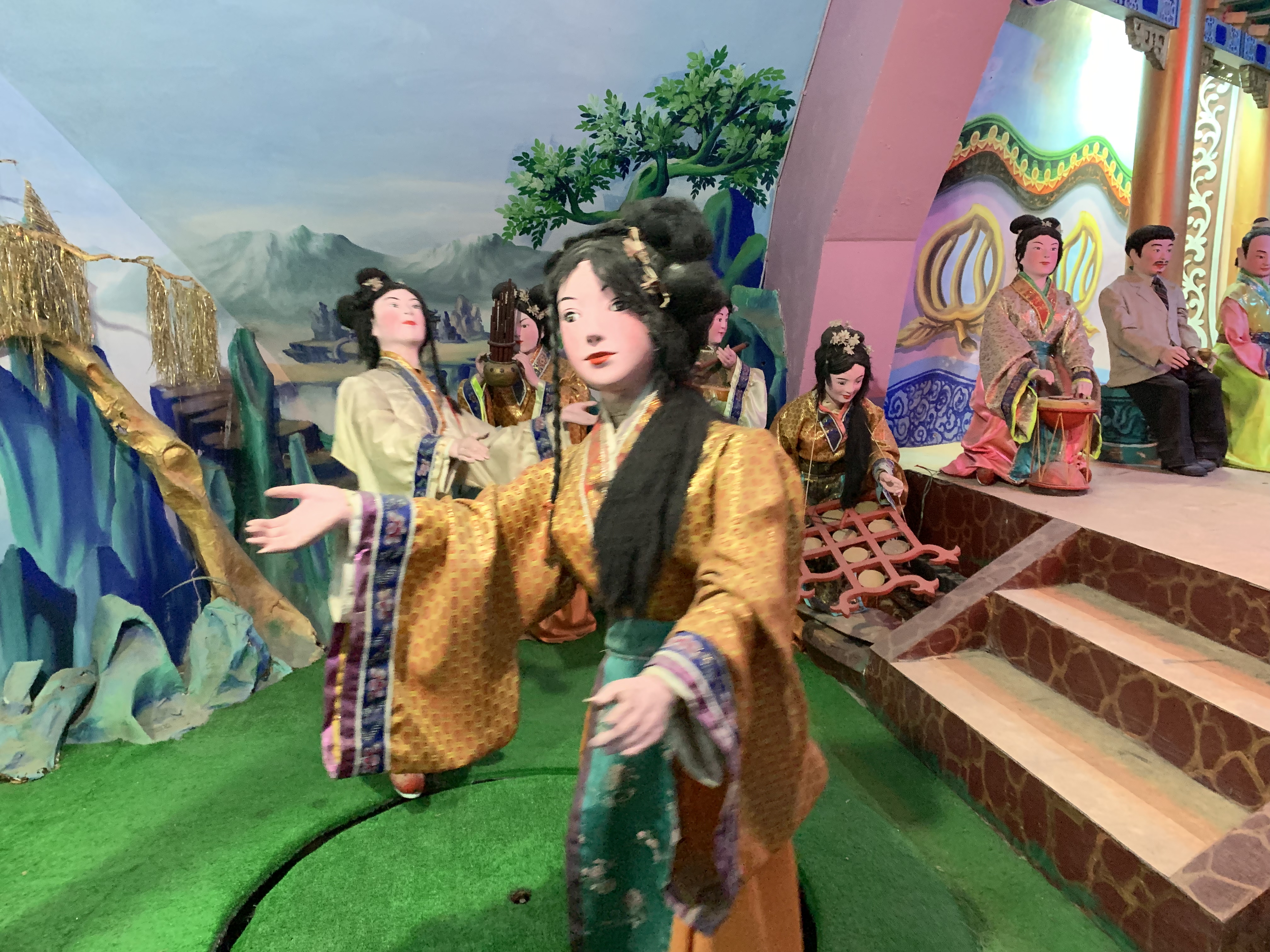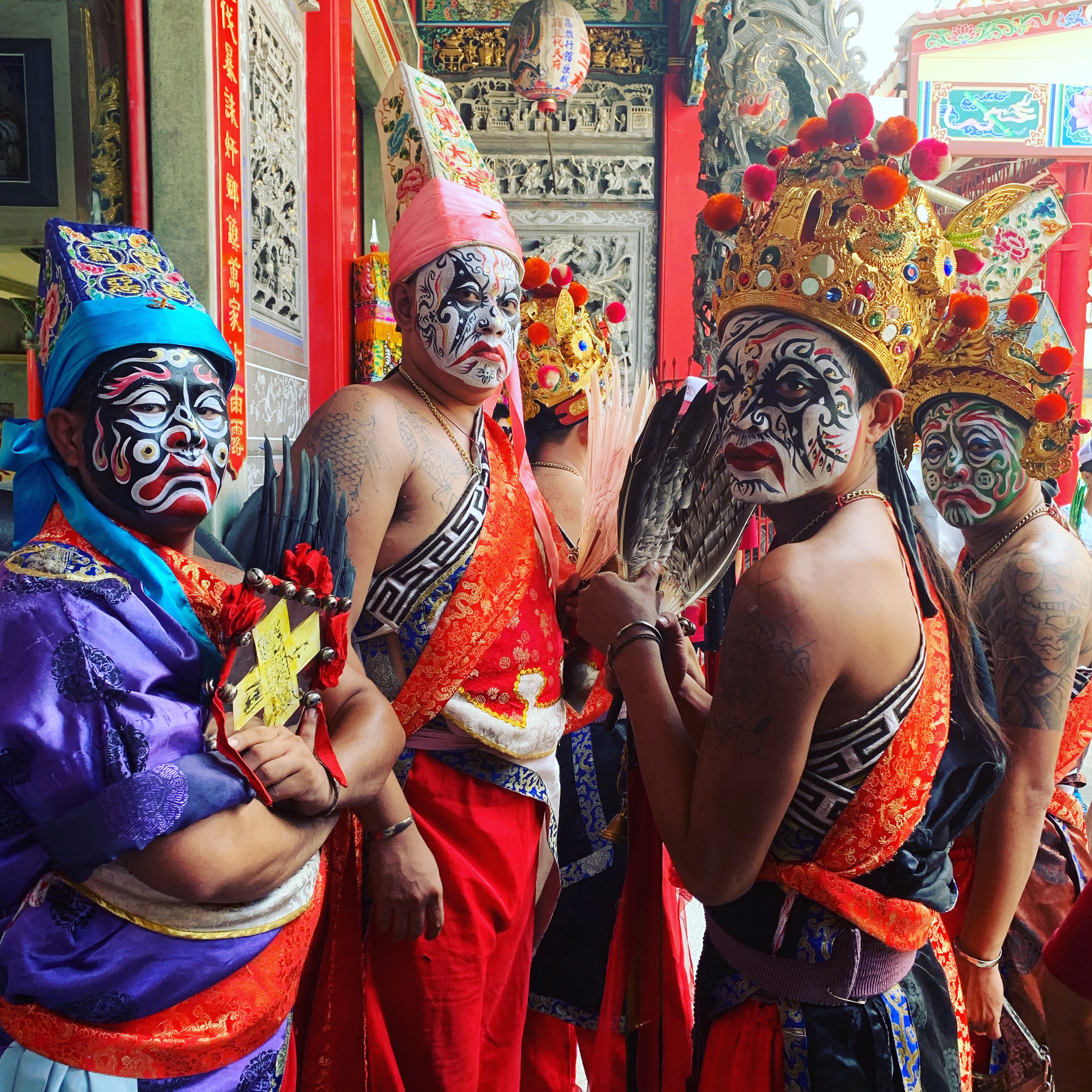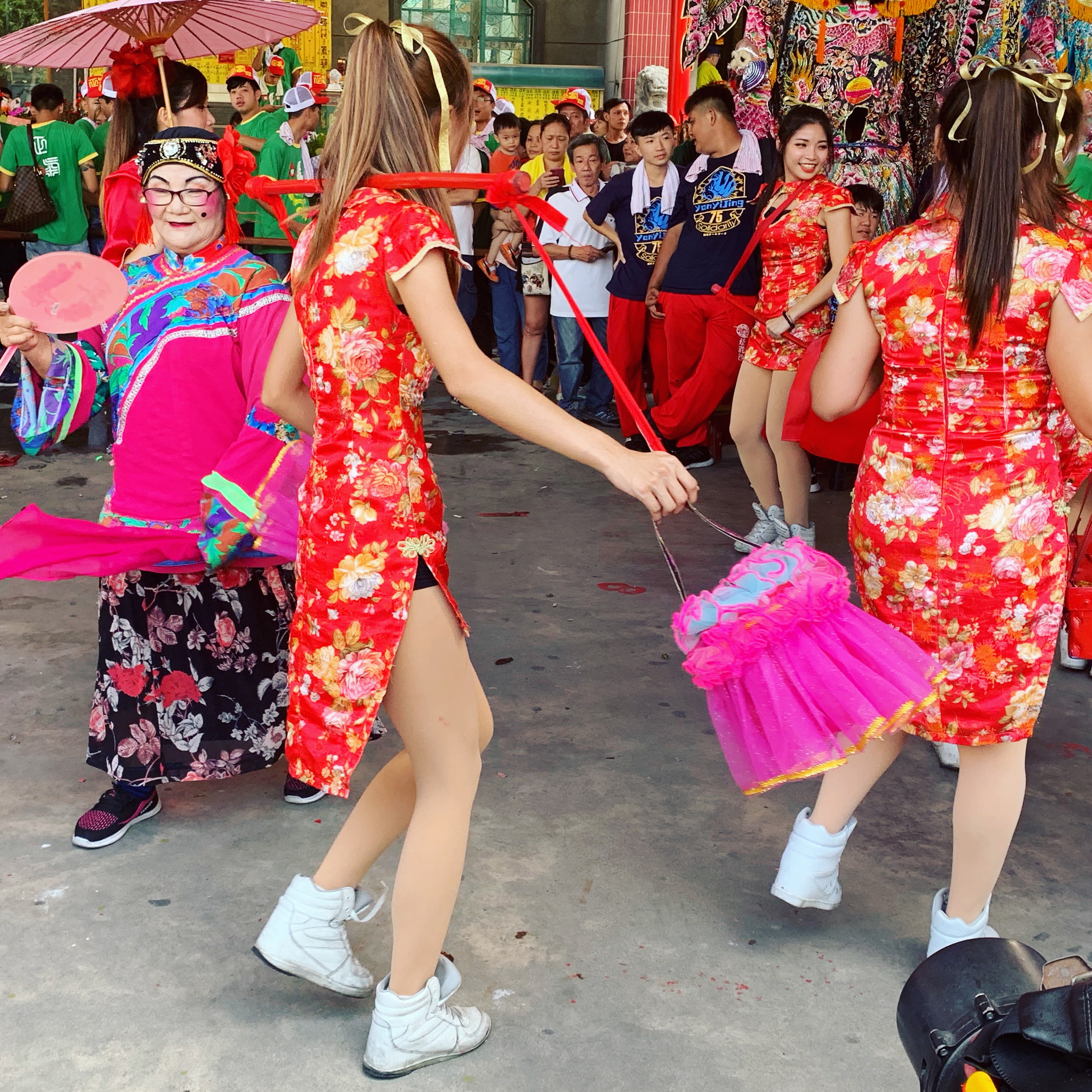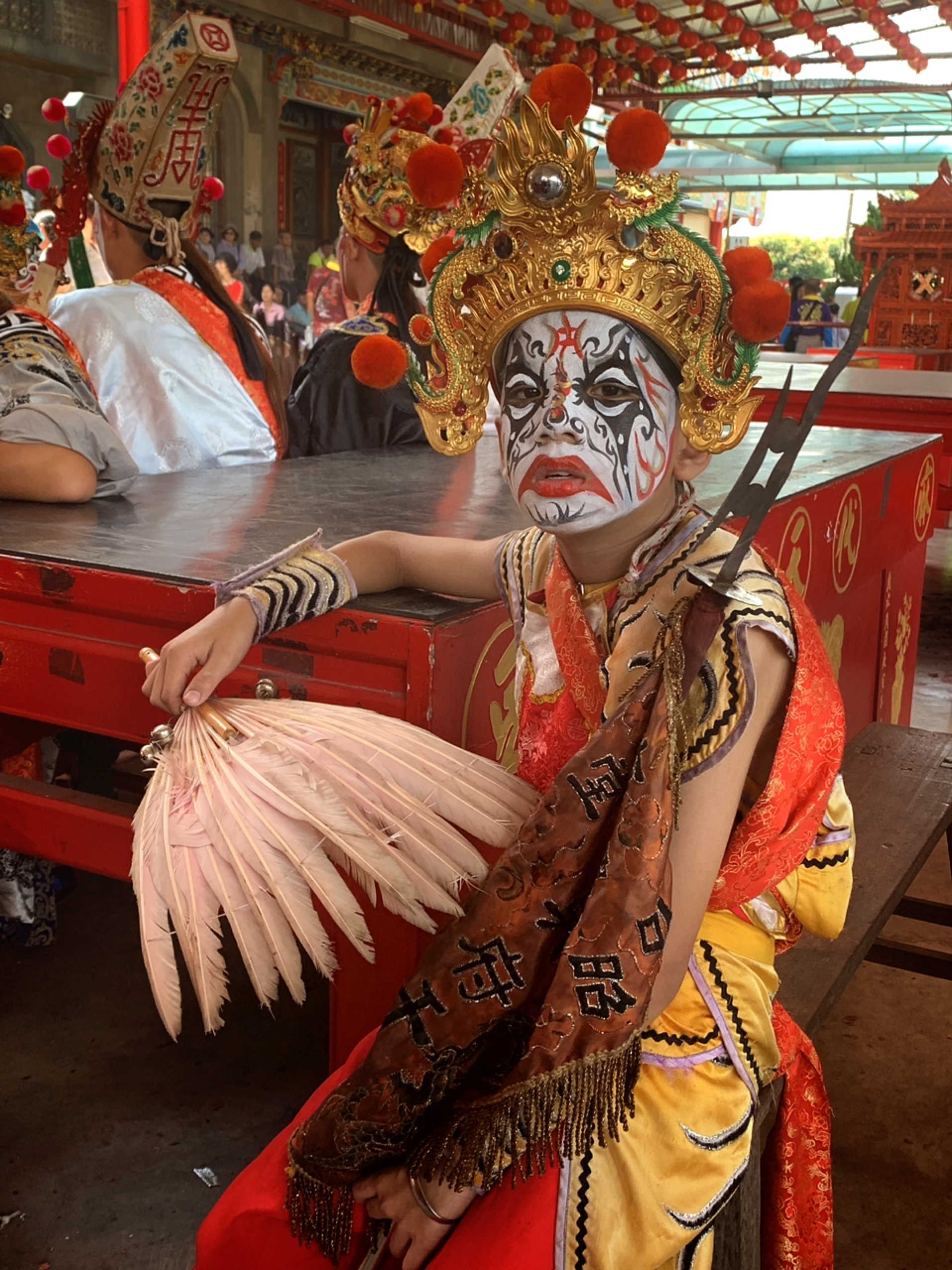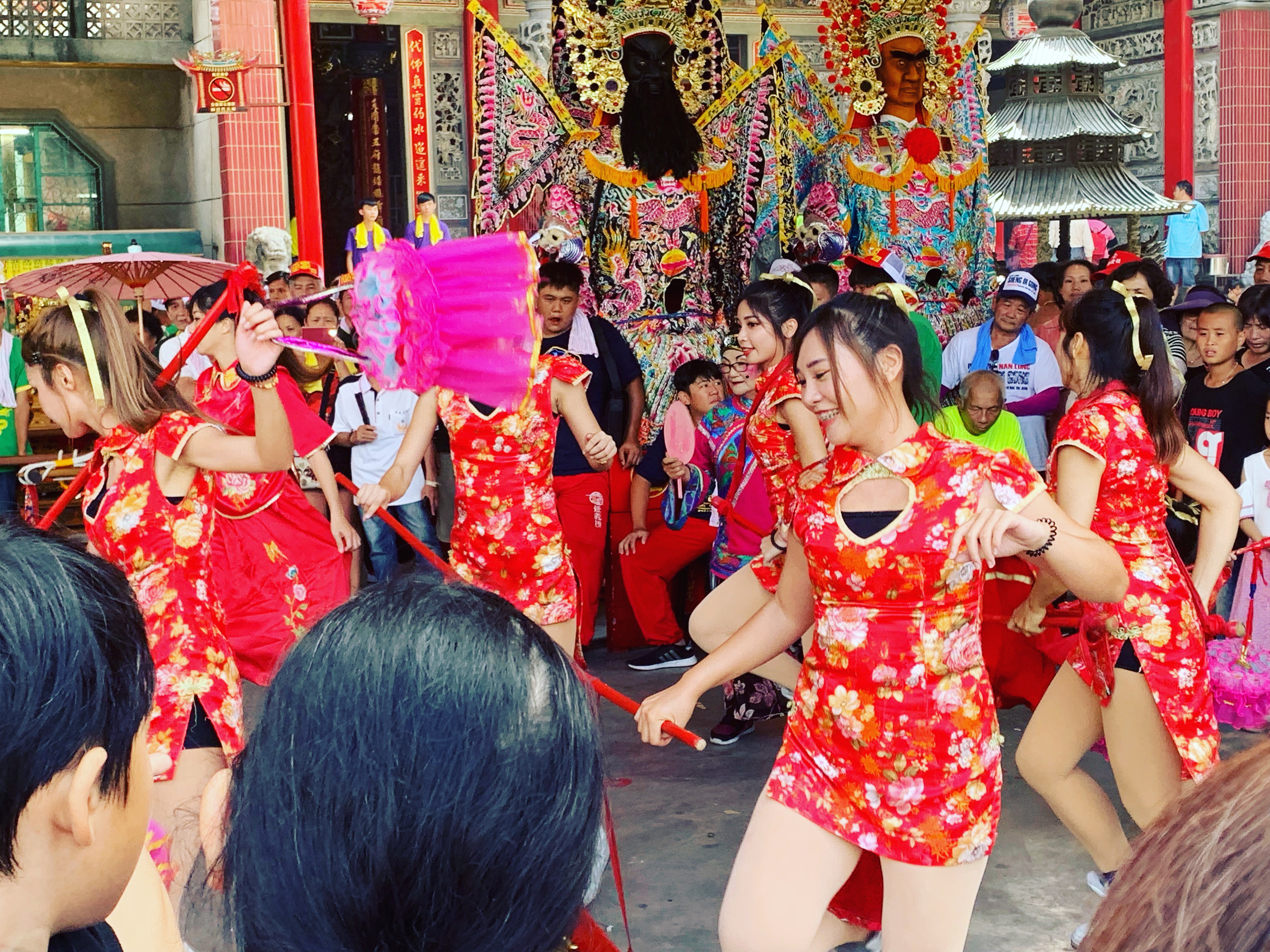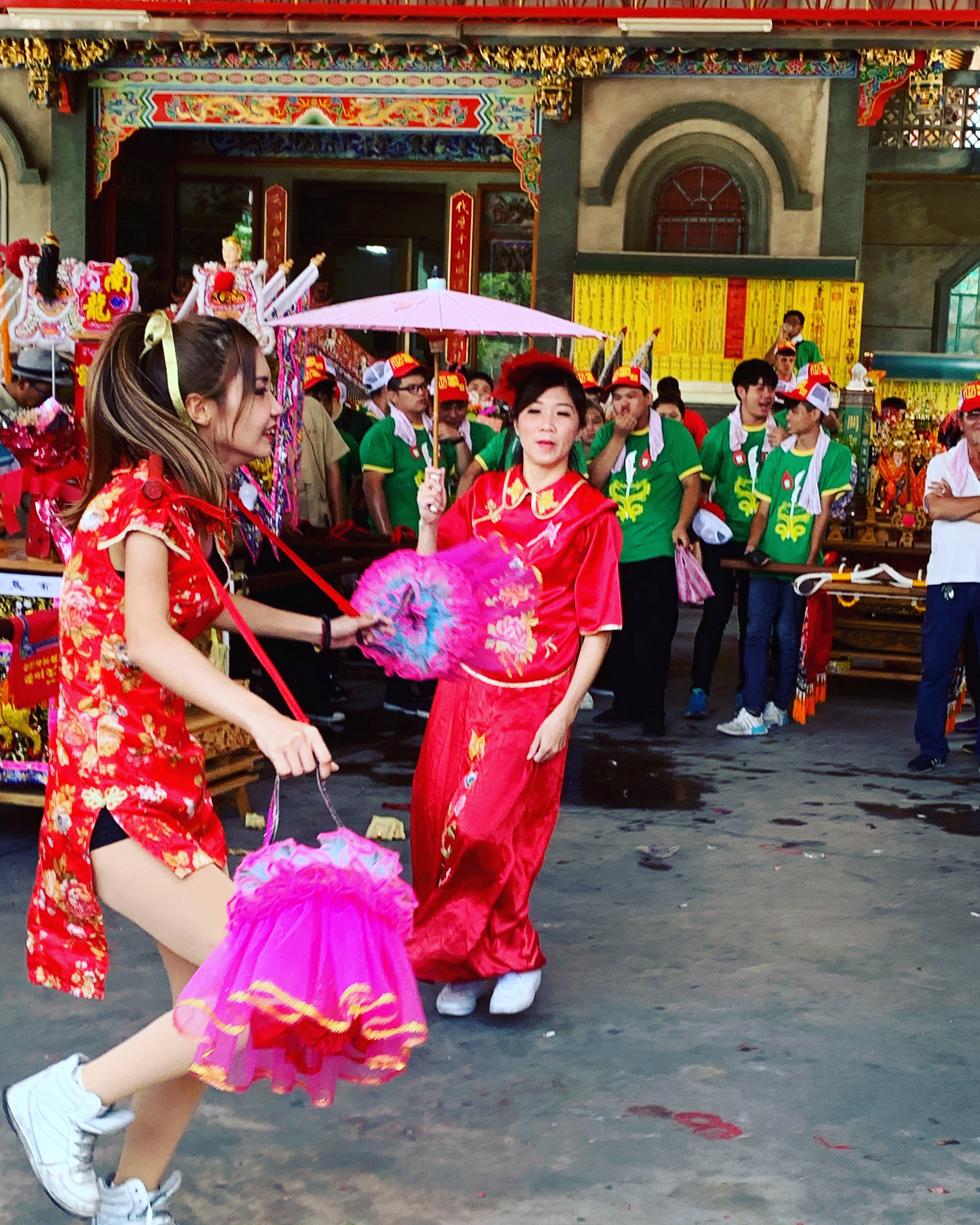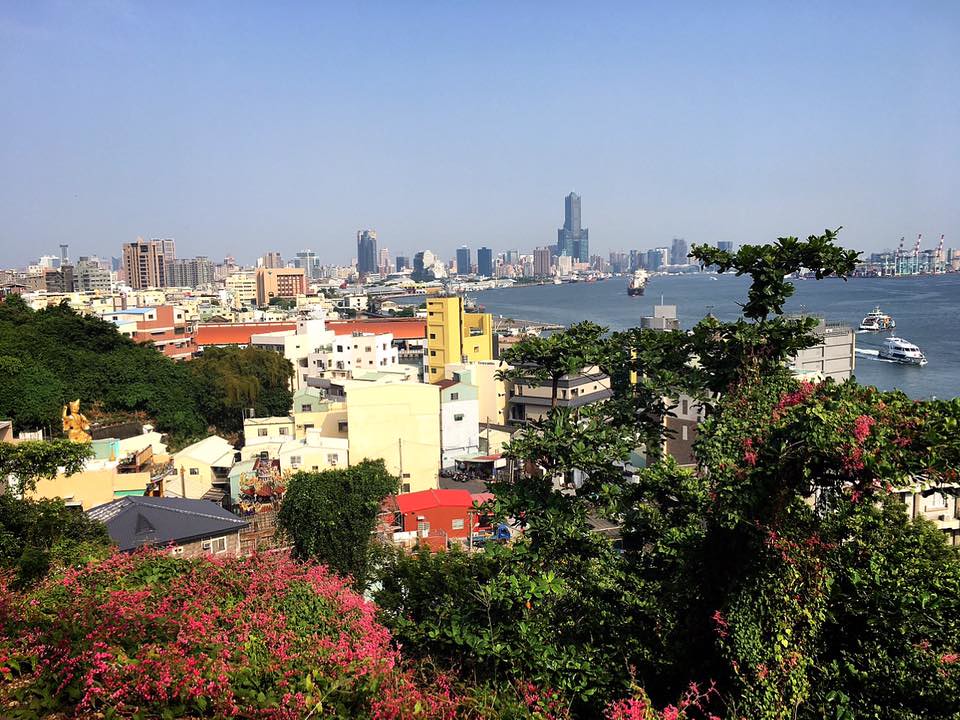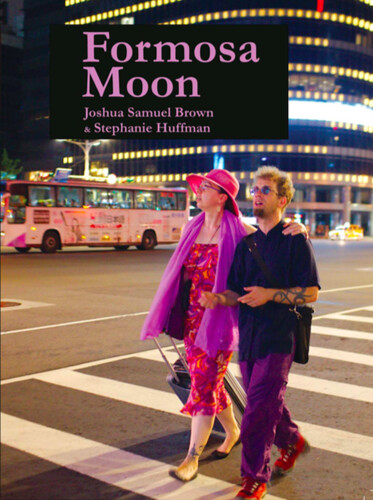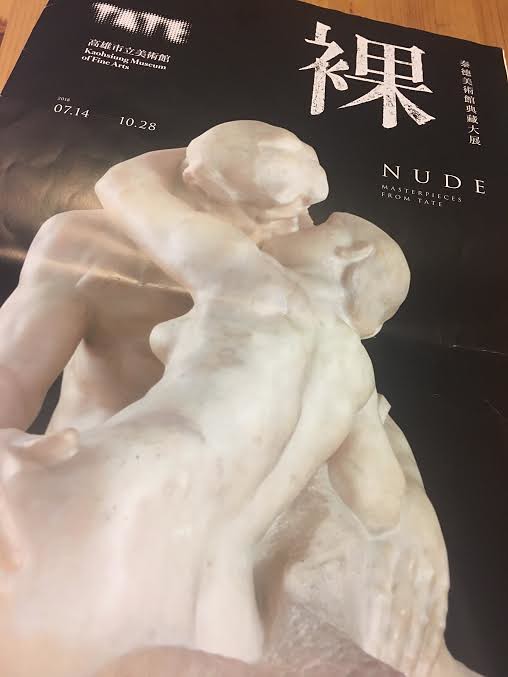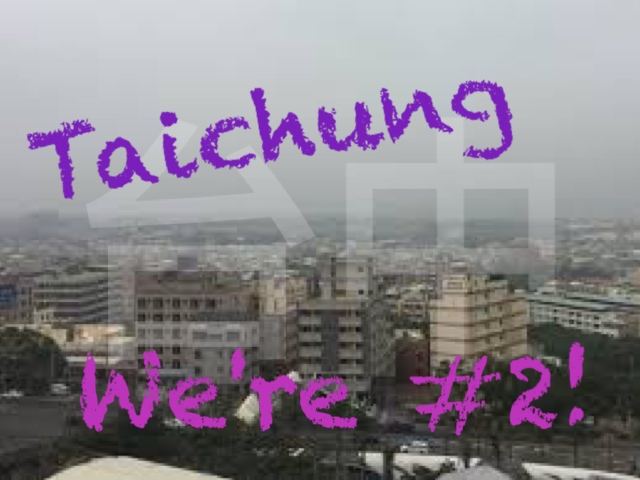 |
| Taichung is now the second-largest city in Taiwan |
Quite some time ago, I took a quick weekend jaunt to Taichung, mostly to see friends, but also to give the city a fair chance.
I'll admit, I've never been the biggest fan of Taichung, and I don't really understand why so many foreign residents say it's the best city in Taiwan to live. Sure, the weather is better, but the pollution is unbearable, making it hard to enjoy. Being in central Taiwan, it's equidistant from the attractions of both the north and south, but it's not actually
in either of those places (to be fair, the area around Taichung is lovely). It's more laid-back, true, and more affordable - but there's also not a lot to do. The city has tried to improve public transport, but I'd say that has spectacularly failed. It has arguably one of the best night markets in Taiwan, but it's not easy to get to if you don't drive.
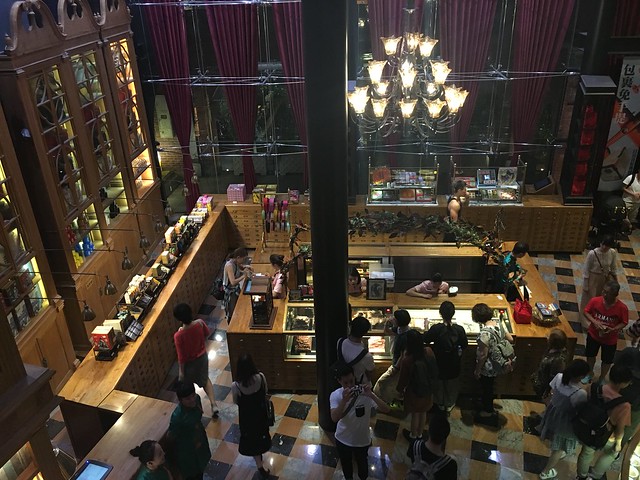 |
| Miyahara, near Taichung Train Station |
That said, I'd only stayed briefly in the past, usually on the way to somewhere else. So I felt I should at least spend a few days there before being so dismissive.
It has also beaten out Kaohsiung to become the 2nd largest city in Taiwan, so it seemed like a good time to give it a chance.
The result? Mixed. Don't get me wrong, the cover photo on this is meant to be cheeky and fun, not a wholesale put-down of Taichung. I had a fun weekend - it's just that it cost me a hell of a lot of money to get around.
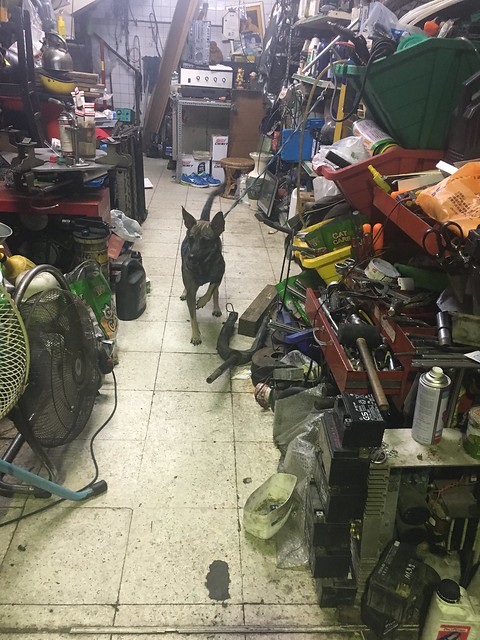 |
| From our nighttime walk through central Taichung city |
I arrived on a Friday evening and immediately went to a friend's house, where a few other friends had gathered. I drank a bit too much whiskey, ate a few too many fried chicken anuses, and let's just say I'm pretty sure my friend had to call an exorcist to banish the demons I expelled in his bathroom later on. That was probably my most authentic Taichung experience: whiskey, chicken ass, and horking up that chicken ass a few hours later because why the hell would anyone eat that much chicken ass?
The next morning, I wandered downstairs not feeling great at all, and found a local breakfast shop. This is a small pleasure of Taiwan - little shops that have all sorts of tasty, greasy fare and are open until nearly lunchtime. Most foreigners in Taiwan seem to go for
dan bing (a savory pancake-like roll with egg and filling, which is often cheese or bacon), but my go-to breakfast is a hamburger and turnip cake. The food was good and cheap and the atmosphere local. Being an industrial area, most of the other customers were Southeast Asian - Taiwanese factories frequently employ labor from nearby countries. This is one facet of the real Taiwan: not a "pure Han Chinese" "island" which is "historically a part of China" with "Chinese culture" where foreigners are temporary guests used for convenience, but a multicultural nation with a unique identity and strong ties to its Southeast Asian and Austronesian neighbors, where many foreigners of various backgrounds build long-term or permanent lives.
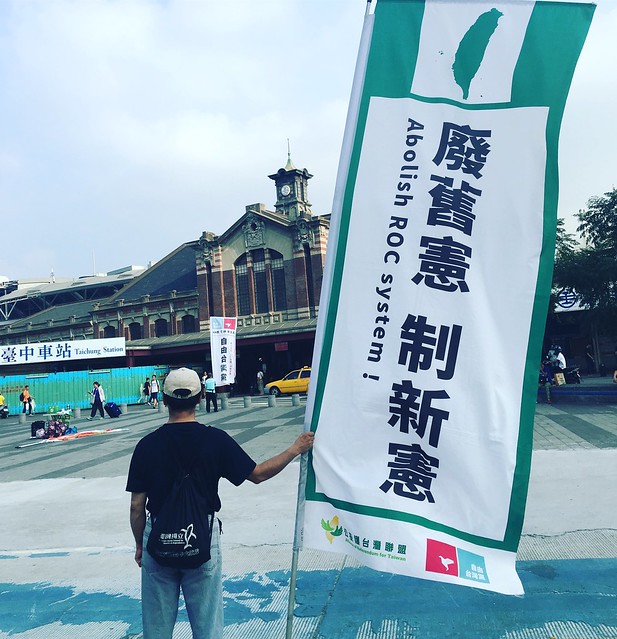 |
| I'm a big fan of these flag guys - we have them in Taipei too |
I have to say this for Taiwan: my friend lived in an industrial park. This is not what you'd imagine in the West: there is residential and commercial activity in such places in Taiwan. That said, in the US, in an "industrial" zone on the outskirts of town, I don't know if I'd have felt safe as a woman walking around alone. In my native land, such an area would probably have been a quiet, eerie place on a Saturday morning. Too deserted for a woman to feel comfortable.
In Taiwan, I knew I was perfectly safe.
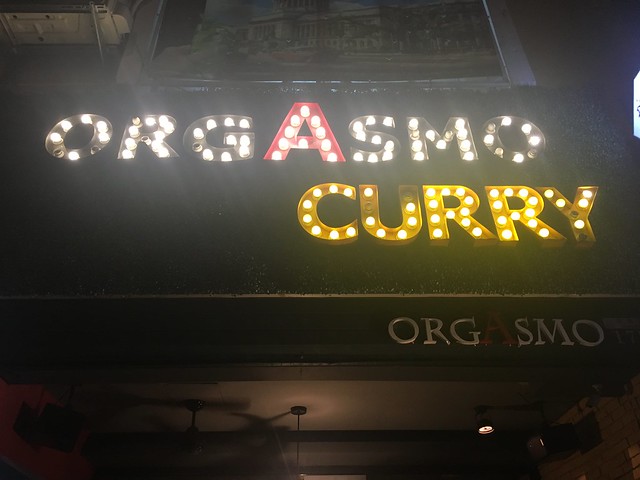 |
| There's no Curry Orgasmo in Taipei |
After saying goodbye to my friend (and reminding him that both of his bathrooms now contained horrors that needed a few
power of Christ compels yous for them to be truly clean again, I mean spiritually clean, not just mopped down, and, oh, sorry about that), I came face to face with Taichung's biggest problem: just...not very good public transport at all. I'd stayed quite far from the city center, and faced a not-that-pleasant ten-minute walk to the nearest bus stop to get into town. No idea when the next bus would come - though to be fair that particular route was probably well-serviced - I took a taxi.
The cost of that taxi was about half of what I'd spent on the hotel. It's not that I didn't have the money, I just resented spending that much cash to get around. I like cities that facilitate rather than hinder transit. I can drive: I even hold an international driver's permit. I won't drive in cities, though, because I value my life and my sanity. I'm not a comfortable city driver by any means, although I'm quite happy to tool around the mountains in a rental car. For someone like me, who feels deeply uncomfortable with city driving, there is no easy way to get around Taichung.
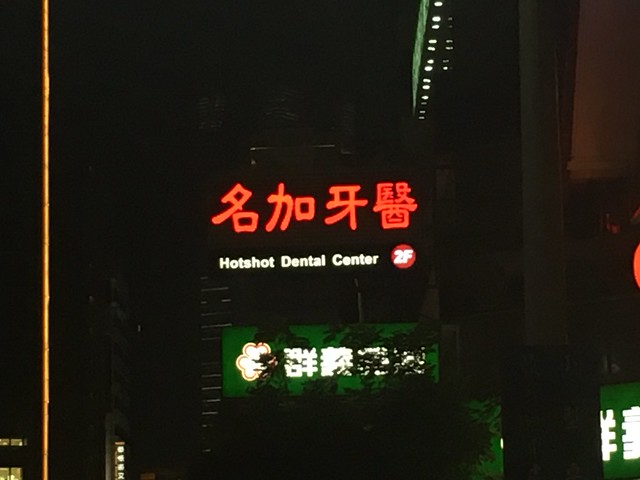 |
| An evening walk in Taichung - if you have nothing else to do here, at least get yer teeth did at Hotshot Dental Center (if you are too snobbish for that, there's an Elitist Dentist in Taipei you can visit) |
I waited for my husband to show up - he would meet me in Taichung after his Saturday morning private class, and we'd grab a late lunch before checking out Taichung's #1 tourist attraction:
Miyahara.
I - and every other tourist in Taichung - enjoyed Miyahara, a gorgeous setting to have tea, coffee or ice cream. I almost feel obligated to write that, though. I'd write more, but Miyahara is well-covered elsewhere. We enjoyed the atmosphere enough that we ended up hanging out there until it was time to go to dinner. Even the view (
of the abandoned Qianyue Building) felt very Taiwanese.
As Stephanie Huffman noted in Formosa Moon, Taiwan does a good job of
not hiding its scars.
Later that evening, it was also pleasant to walk from downtown - most affordable hotels are near the train station - to meet another friend in a restaurant near the
Calligraphy Greenway. We avoided the massive Taiwan Boulevard, which didn't run particularly close to our destination, and took quiet backstreets. Again, in Taiwan we knew this was perfectly safe. I don't know that I would have done so after dark in many American cities.
Buses along Taiwan Boulevard were an option, but not particularly convenient to where we were going. Fortunately, we didn't mind the walk. Good thing too, as there was no alternative way to get there.
We met at
Curry Orgasmo. If you're wondering whether I chose it for the name...I did. Also, it has perfectly acceptable (but not orgasmic) curries, and there isn't one in Taipei. This part of town is great for nighttime walking - there are parks, shops, restaurants, places to grab a drink. It's lively, without the unending crowds of Taipei. If I were planning to return to Taichung I'd look into staying in this neighborhood instead. The area around the train station is crowded and bustling, and the hotels are cheaper (some of them
don't give you condoms and lube on the nightstand, even) but there's not quite as much to do.
After curry, beer and chat, we were meant to head out to meet yet another friend for drinks and dessert at
Delys&Sens - a bar and cafe that had real French desserts and well-made drinks by an expert...what are the kids calling it these days, "mixologist"? Count me in!
 |
| A drink from Delys&Sens |
 |
| Desserts at Delys&Sens |
Inviting our dinner companion along, we realized that the walk from Curry Orgasmo to Delys&Sens would be just a bit too far, so we hopped in another taxi. Despite friends insisting that Taichung does have a working bus-based public transit network, there was no clear way to get between the two without a wait and walk that was long enough to not justify trying.
Delys&Sens was absolutely fantastic - I enjoyed hearing about how the bartender refused to work with Aperol but was willing to use Campari, despite being a fan of Aperol myself (too many grad school-based summers in Europe) - and the desserts, well, I wish I could easily find desserts that good in Taipei at reasonable prices. In Taipei, I feel like I usually end up with a $200NT slice of defrosted chocolate cake purchased from the same factory that every other cafe orders from.
This was a level above. Just good Western desserts. Just
good. With good drinks. Just...
good. I cannot recommend it highly enough. We were also able to sit on an outdoor terrace - a rare treat coming from Taipei, where there is hardly ever outdoor seating (it's not only too crowded, the weather just doesn't cooperate most of the time). It was one of those laid-back evenings in a different city with friends that you can enjoy when you actually live in a country, rather than trying to pack in must-see tourist destinations from dawn-till-bedtime.
No chicken asses to be found, but I'd had enough of those. This was another Taiwan urban experience.
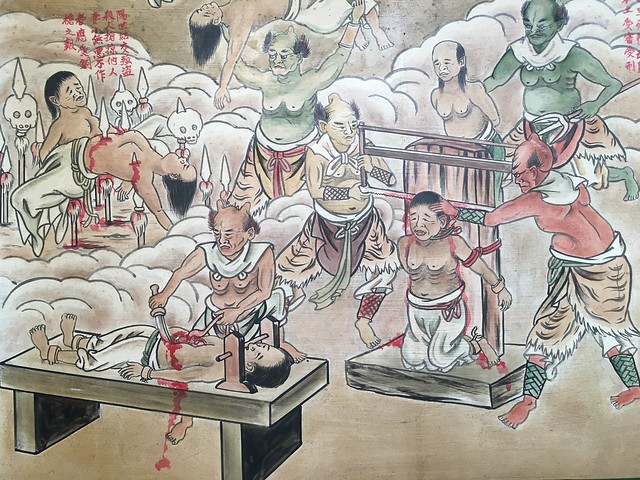 |
| Scenes of Hell at the City God Temple |
The next day, we started with coffee and a browse of the books for sale at
Fleet Street. Then we set out to find some of Taichung's older points of interest - the City God Temple (
城隍廟), which is to the south of Taichung train station and in the area where the Qing were building what was to be the capital of Taiwan ("Taiwan City"). Nothing remains: the temple is still there, but the rest was torn down by the Japanese. But, it's an interesting old part of the city to poke around in and get a cheap lunch.
The temple itself is also interesting, with - as City Gods aren't always the nicest or kindest dudes - lots of scenes of Hell, as in, that's where you'll go if the City God judges you at your death to deserve it.
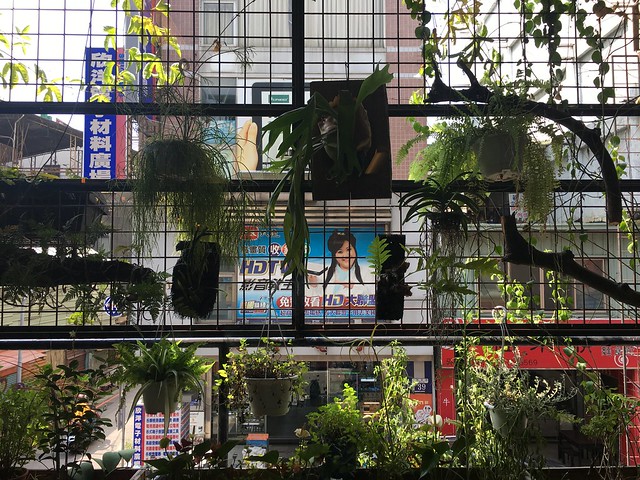 |
| Fleet Street Cafe |
Then we tried to take a look at the old Imperial Examination Hall - a wooden structure, one of the oldest and best-preserved Qing-era buildings in Taiwan - but it was closed for renovation. We tried to sneak in, but it just wasn't happening (and perhaps was not entirely safe).
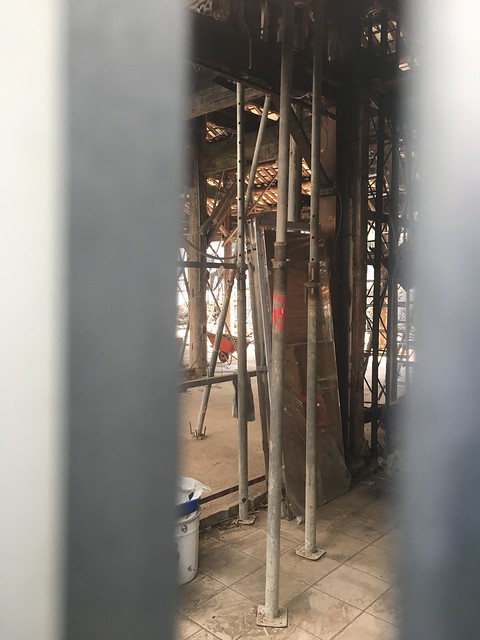 |
| A peek through the bars at the Qing Imperial Examination Hall |
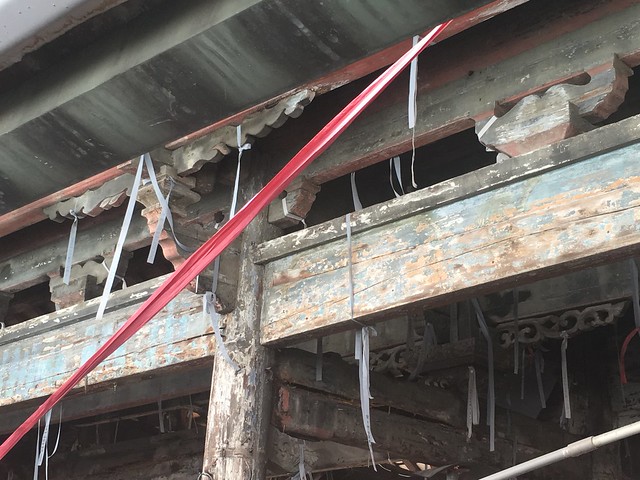 |
| A zoomed-in look at the Examination Hall |
As - again - there was no public transport between these two stops, we were downright flushed from walking given the heat of the day. We'd also stopped in a Filipino supermarket we'd passed to load up on things that can be hard to find in regular shops - beef bouillon, adobo seasoning, that sort of thing.
Fortunately, near the examination hall,
one can find Taichung's old
City Hall, a gorgeous Japanese-era building that is still in use as a government office. You're allowed to take a look as long as you sign in, at least on Sundays (I can't speak for whether that's possible on weekdays, as it seems to hold functioning office space). This sort of building just
feels like Taiwan: Chinese on the signage, a Japanese colonial-style building, all bricks, concrete and plaster, colonnades. Balmy tropical heat, palm trees in the courtyard. Peeling paint. A laid-back, chilled-out vibe. A friendly security guard lounging out front, drinking from his glass thermos of Chinese-style tea, who doesn't mind if you walk around unsupervised. Staircases with worn-out red carpeting, the mechanical sound of a big metal fan churning the air. A few families with kids playing in the courtyard because why not?
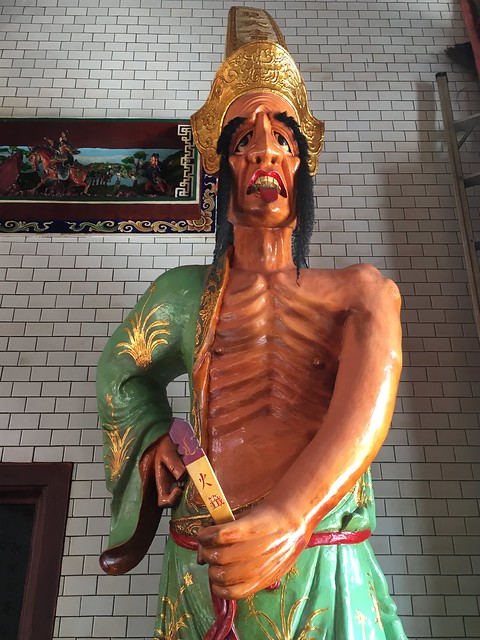 |
| At the City God Temple |
International tourists might not find these things of interest, but as a domestic tourist, to me it's quite heartening. Yup, this is Taiwan. This is my home.
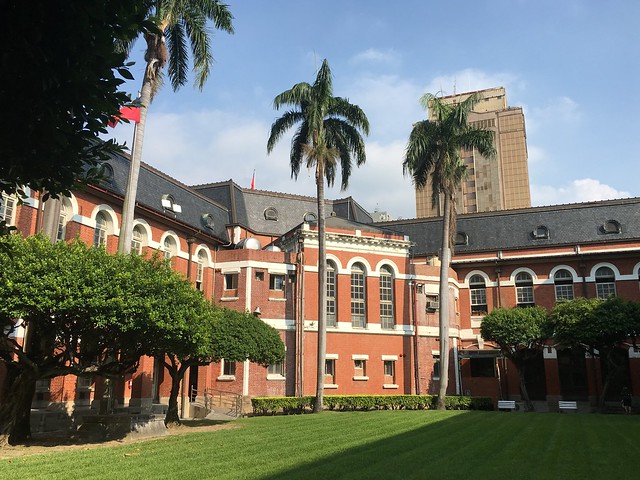 |
| This is so Taiwan. I look at this scene and can only really think of this beautiful country. |
 |
| Inside the Old City Hall |
 |
| Cat shaved ice |
Feeling a bit too overheated to do much more, we took a brief walk - basically just across the street - to another old government building. To find it, just look for the
other colonial-era structure near the old City Hall. With dinner plans looming, we didn't have a lot of time to walk around the building, but you can find vintage-vibe
Cafe 1911 on the ground floor. We had some iced milk tea and a small shaved ice dessert decorated to look like an adorable little cat, and relaxed until it was time to pick up our bags from storage and head to the other side of town.
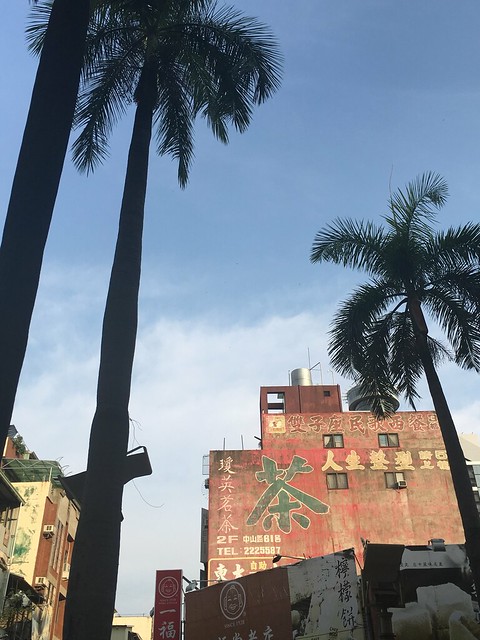 |
| This, too, is just so Taiwan |
It should have been a 30-minute drive, but it took closer to an hour and cost about $400NT. There was no public transit option, and certainly no MRT to avoid the snarled traffic. We were late for the soft opening of
Texas Roadhouse Taichung, where we'd been invited to join some other friends. The food was hearty, American and yes, good - I may travel the world but I'll tell you, American mid-range restaurant chains are very good at comfort food and I won't pretend a hipster distaste for them that I don't have - and the atmosphere reminded me of the country of my birth.
Certainly there was no more chicken ass.
From there, we had to taxi to the HSR station as well - again, no convenient public transport that could get us there in a reasonable time frame (I'm not sure there was any transit available at all in that part of town) - for another chunk of cash.
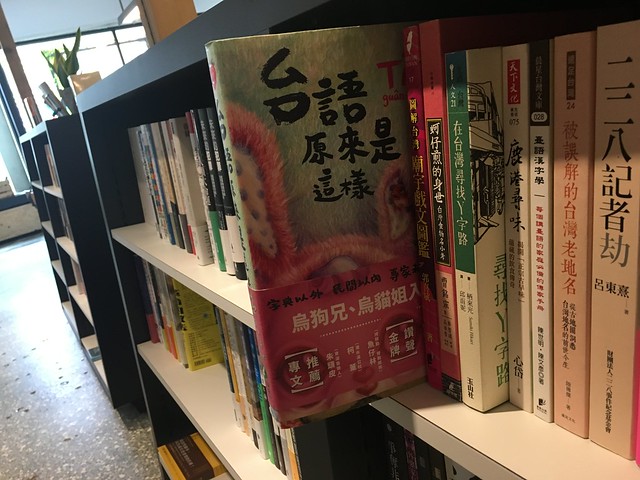 |
| Some of the books available (no real English selection) at Fleet Street |
And that's the story of how I had a very enjoyable weekend in Taichung with friends, and spent more money on taxis than on a hotel, because if you don't drive, there is no reasonable, quick way to get around the city.
That's the only reason I hesitate to recommend it as a weekend for readers who live in Taiwan but don't drive. You can have a lot of fun, especially if you have friends there or like searching for old or vintage things. I could have spent more time there, heading up to
Dakeng,
wandering Taichung Park, or another evening in the neighborhood around Curry Orgasmo, trying a new restaurant. I would have loved to have taken Brendan to
Fengchia Night Market, but it's a bit far out and the last time I went, I spent more on the taxi there and back than I spent in the market itself. Or I would happy wander in
any of these
areas.
Taichung isn't that pretty on a large scale - cities in Taiwan usually aren't - but you can find lots of pleasant little nooks and crannies, and unexpected things if you walk around, that might surprise and delight you. If you skirt all the construction, that is.
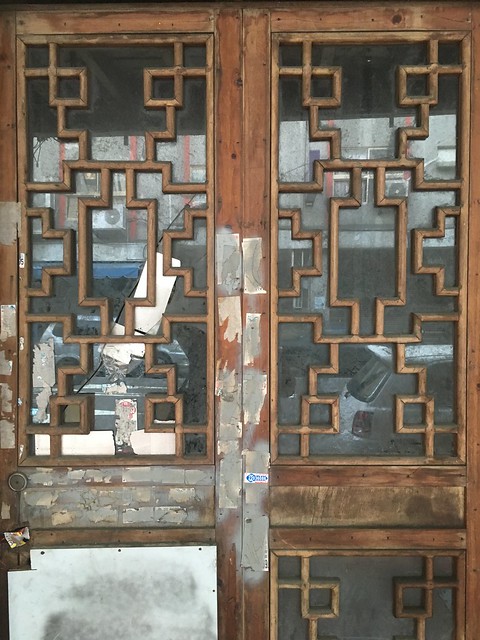 |
| Just a random old thing on the street in Taichung |
But if you don't drive, it will be a more expensive weekend than you might like. Few things are near each other, taxis often need to be called, and while there is a bus network, it's just not that usable or convenient if you don't know your way around already (which I didn't).
By all means, visit. But budget accordingly, become comfortable with city driving (something I will never do), or stick only to activities along the major bus routes. As a city to spend a weekend in, Taichung gets an A- (it would get an A if not for the pollution). As a city I had to navigate without a car, it gets a D at best, and that's only because the desserts at Delys&Sens made me feel generous.
 |
| Doughnut-like baked goods vendor on the way to the City God Temple (her products were delicious, and her dog adorably scruffy) |

